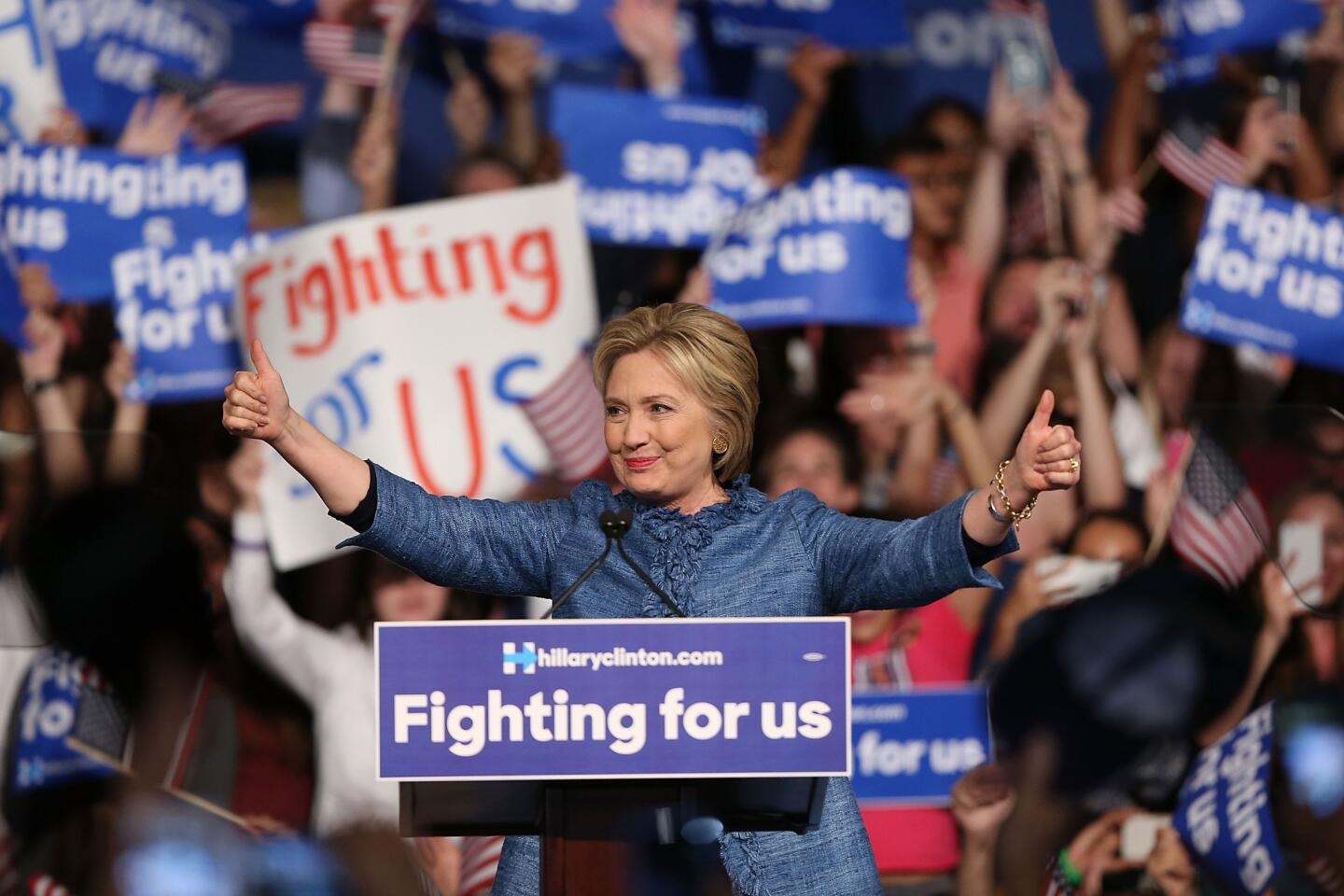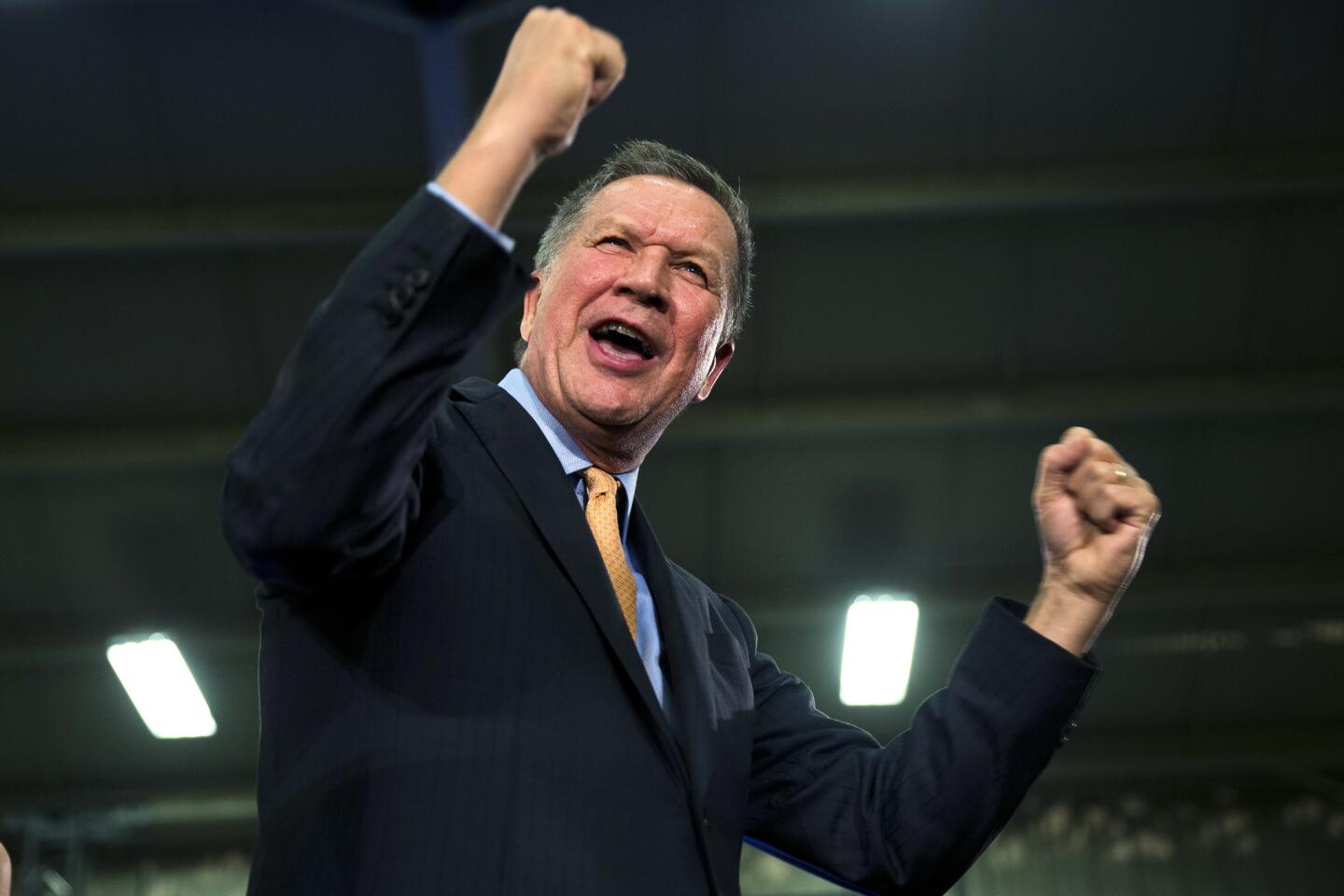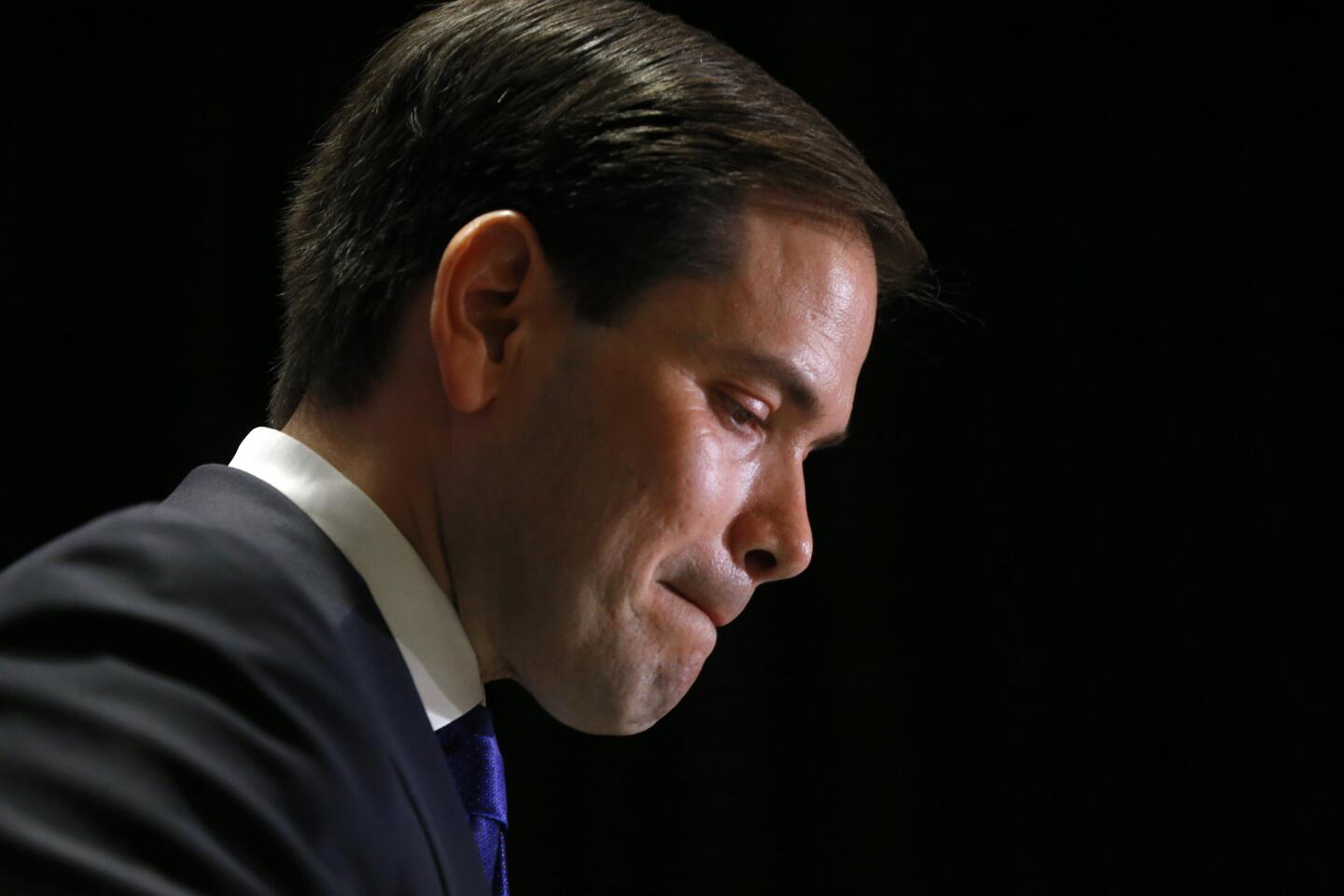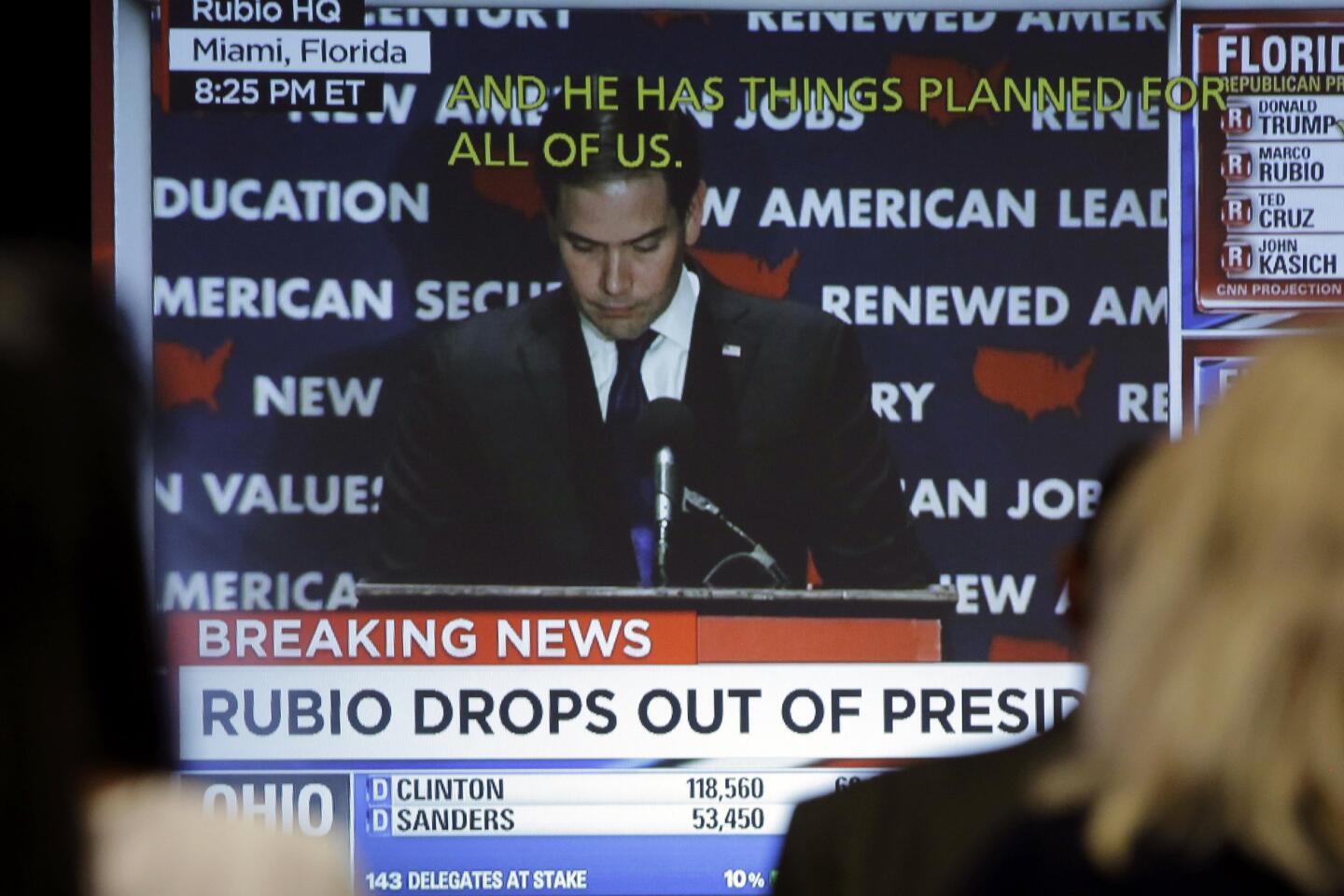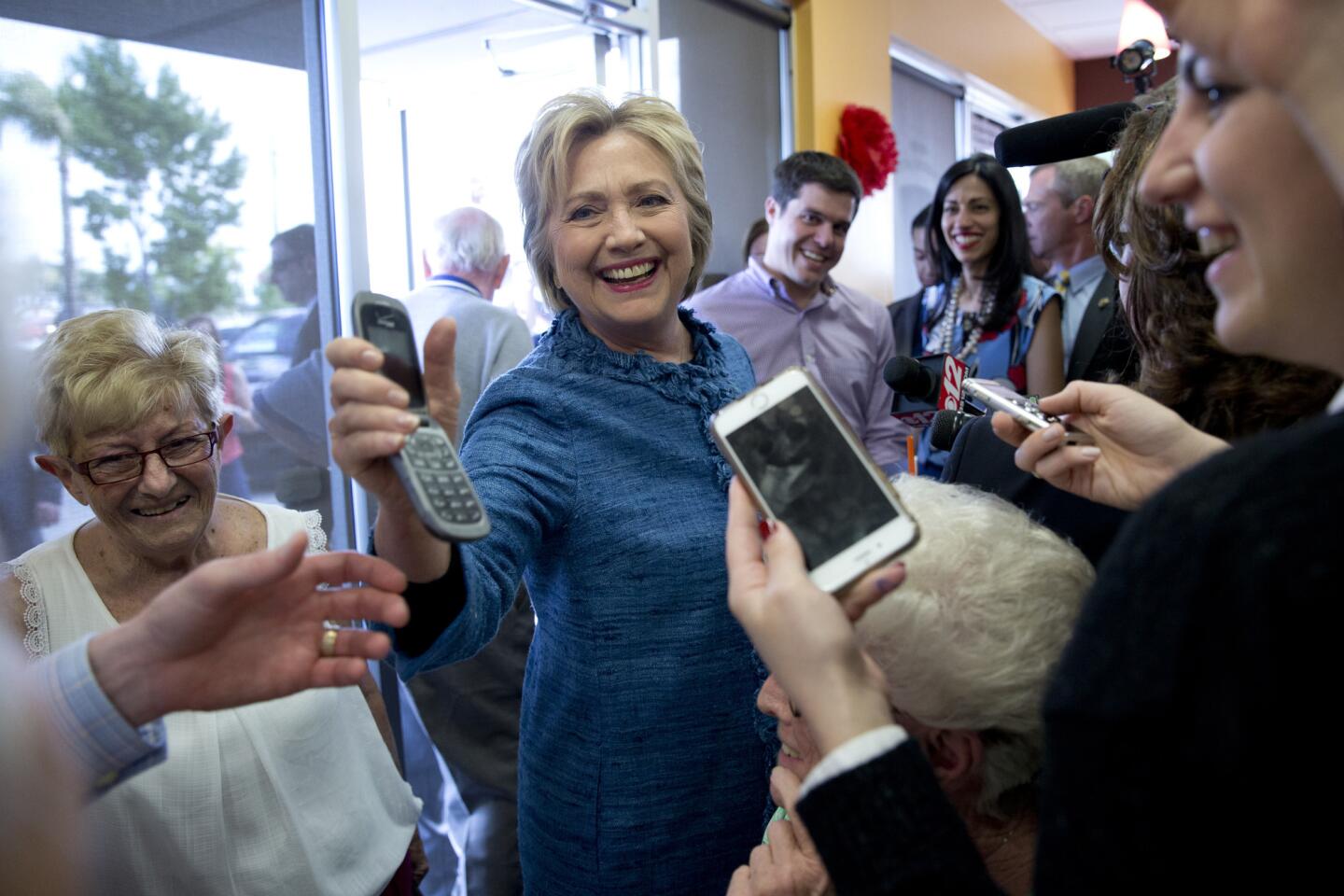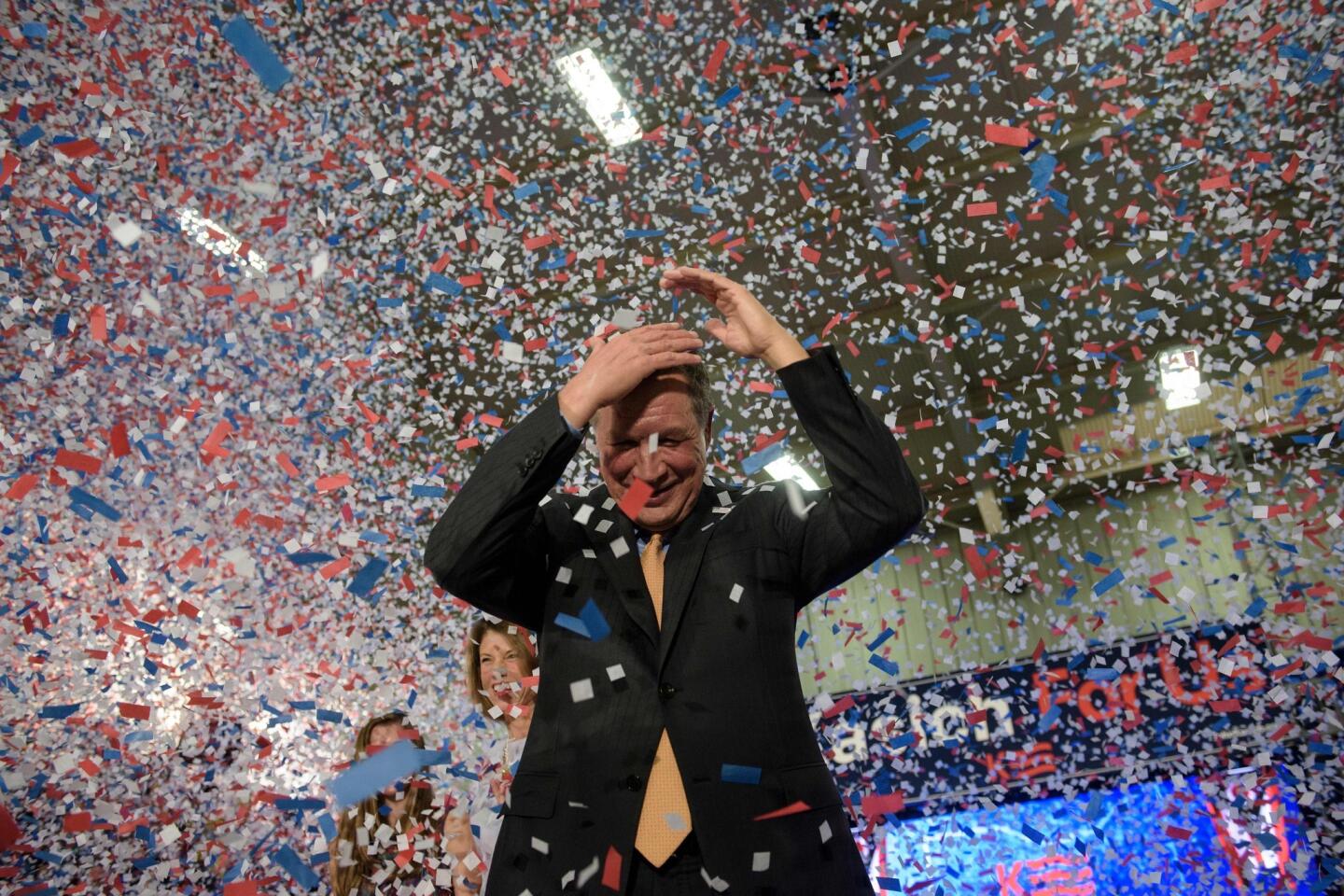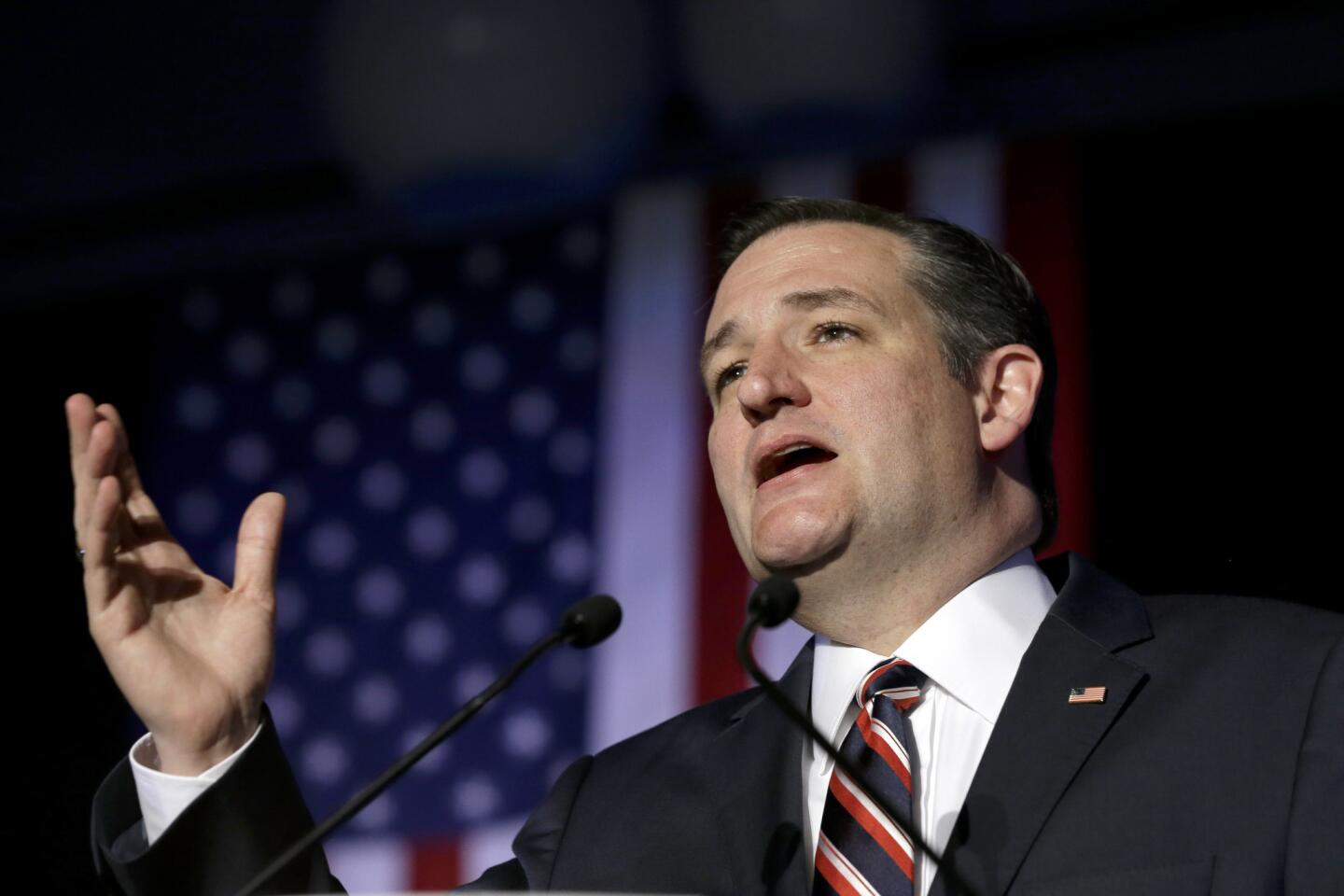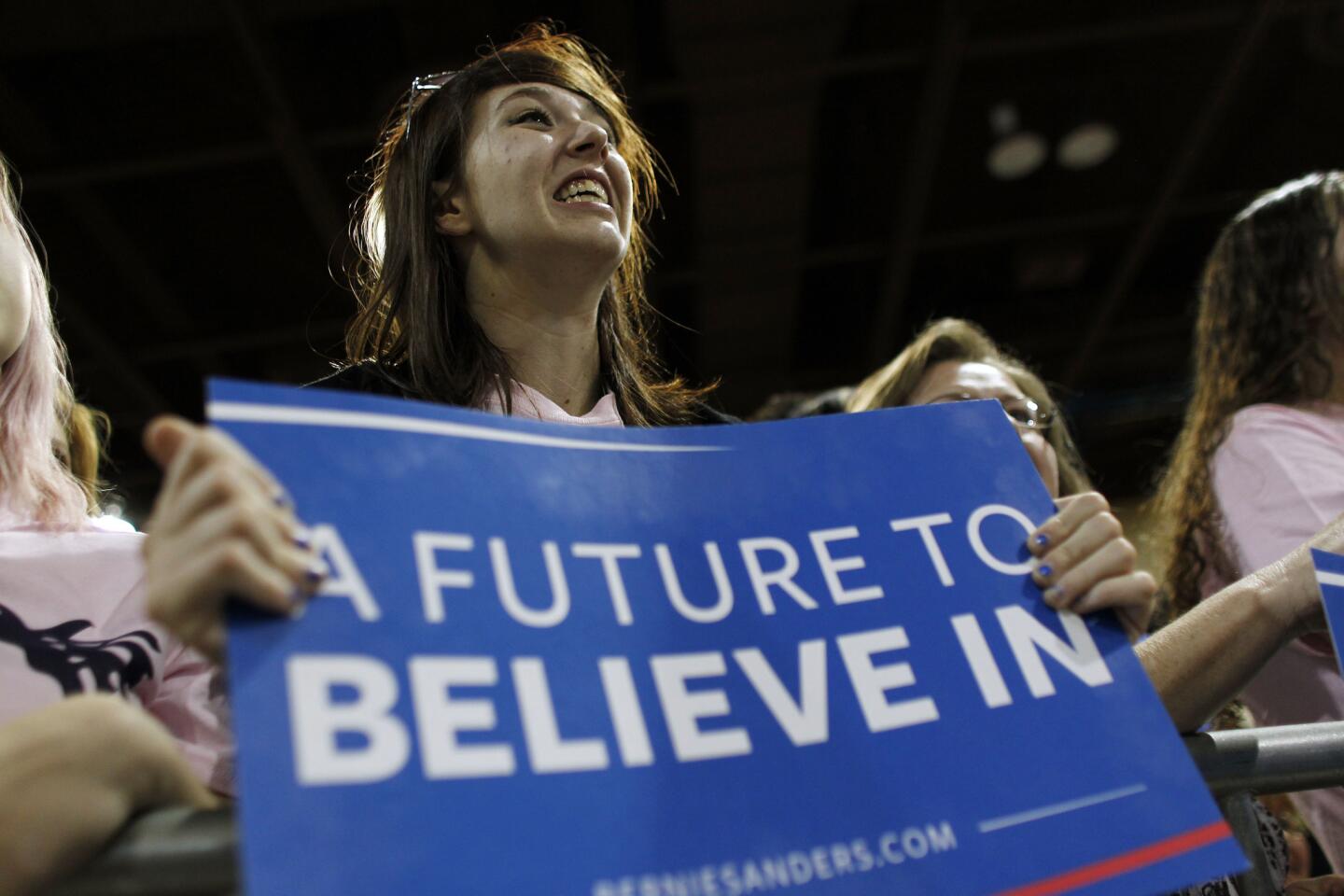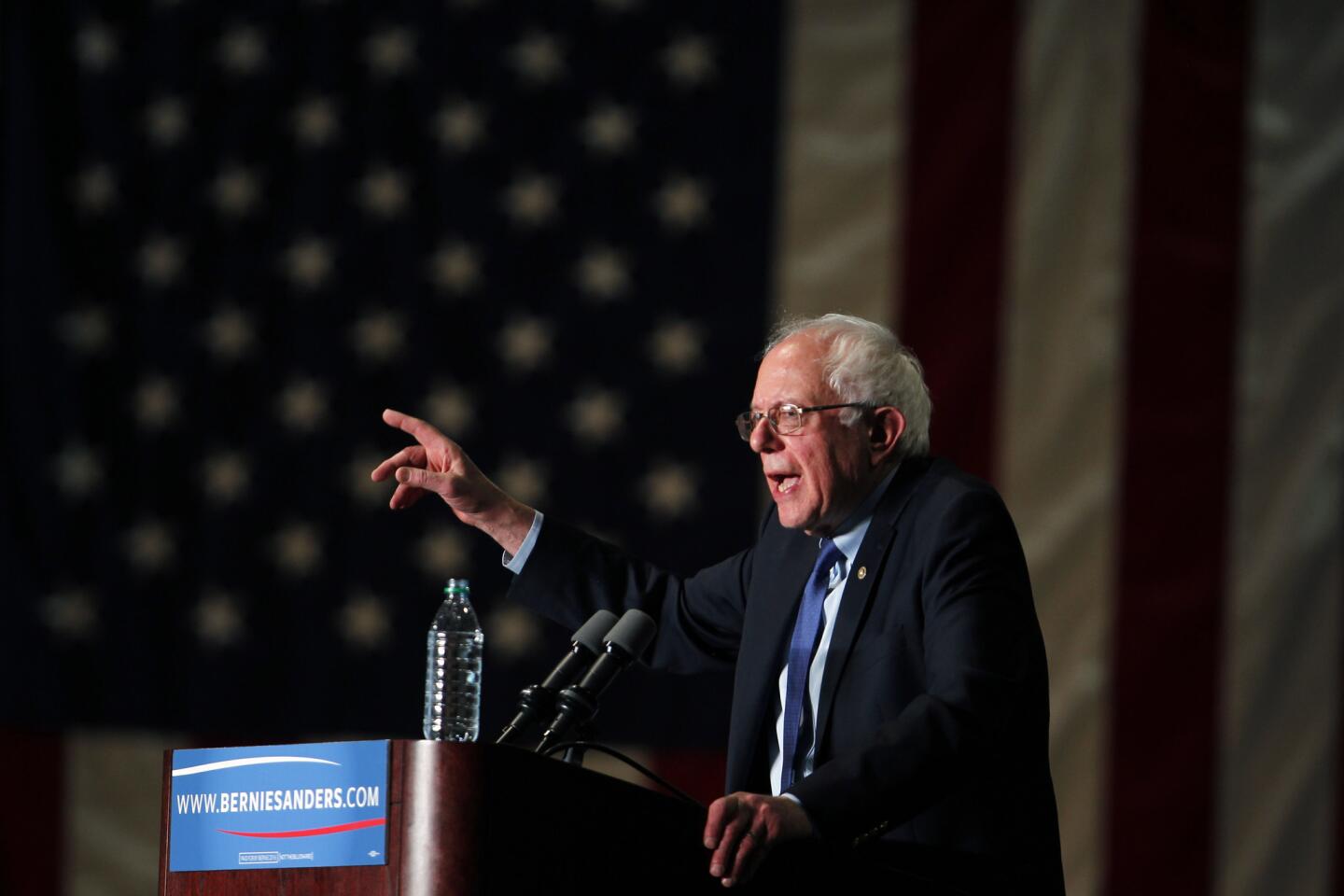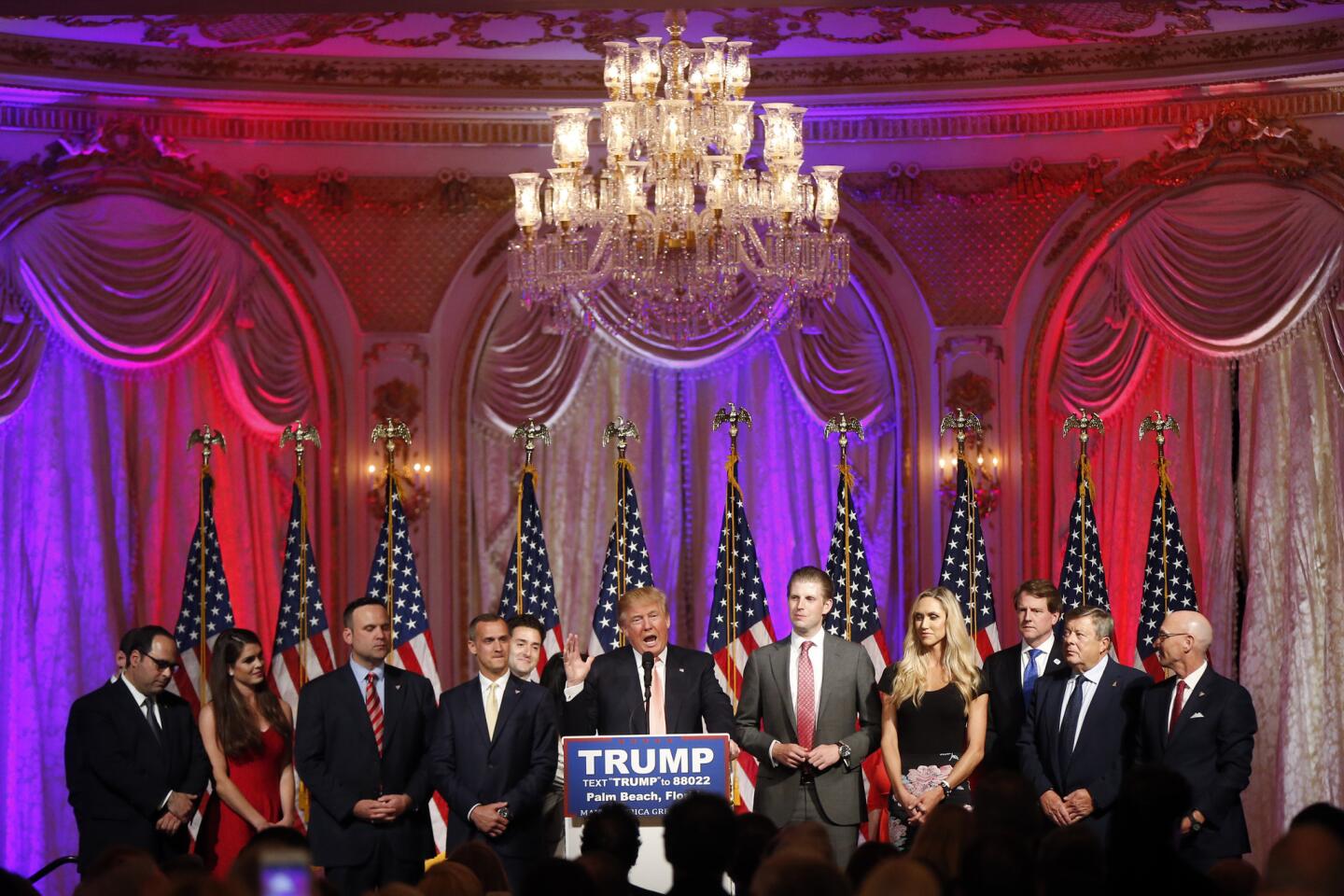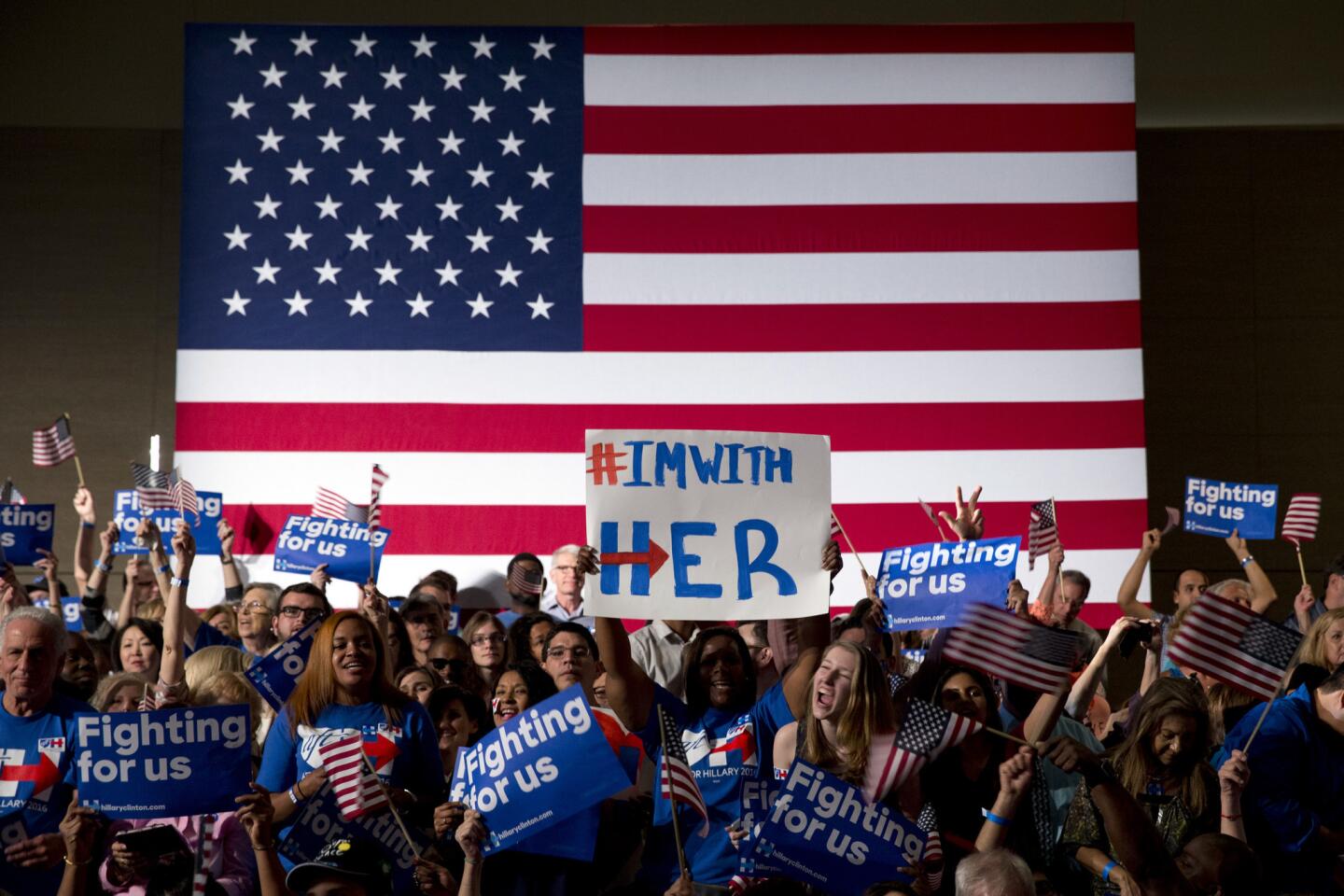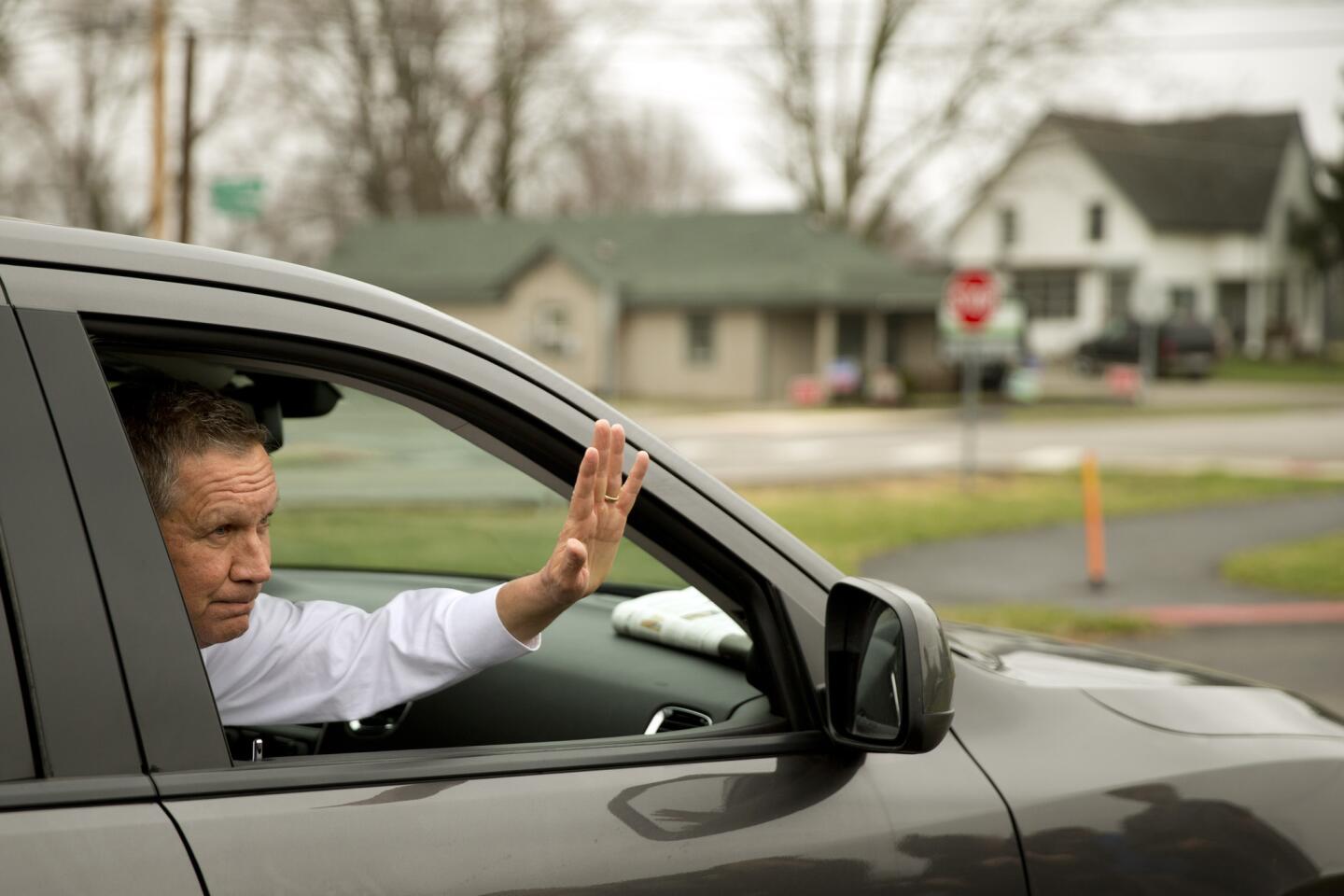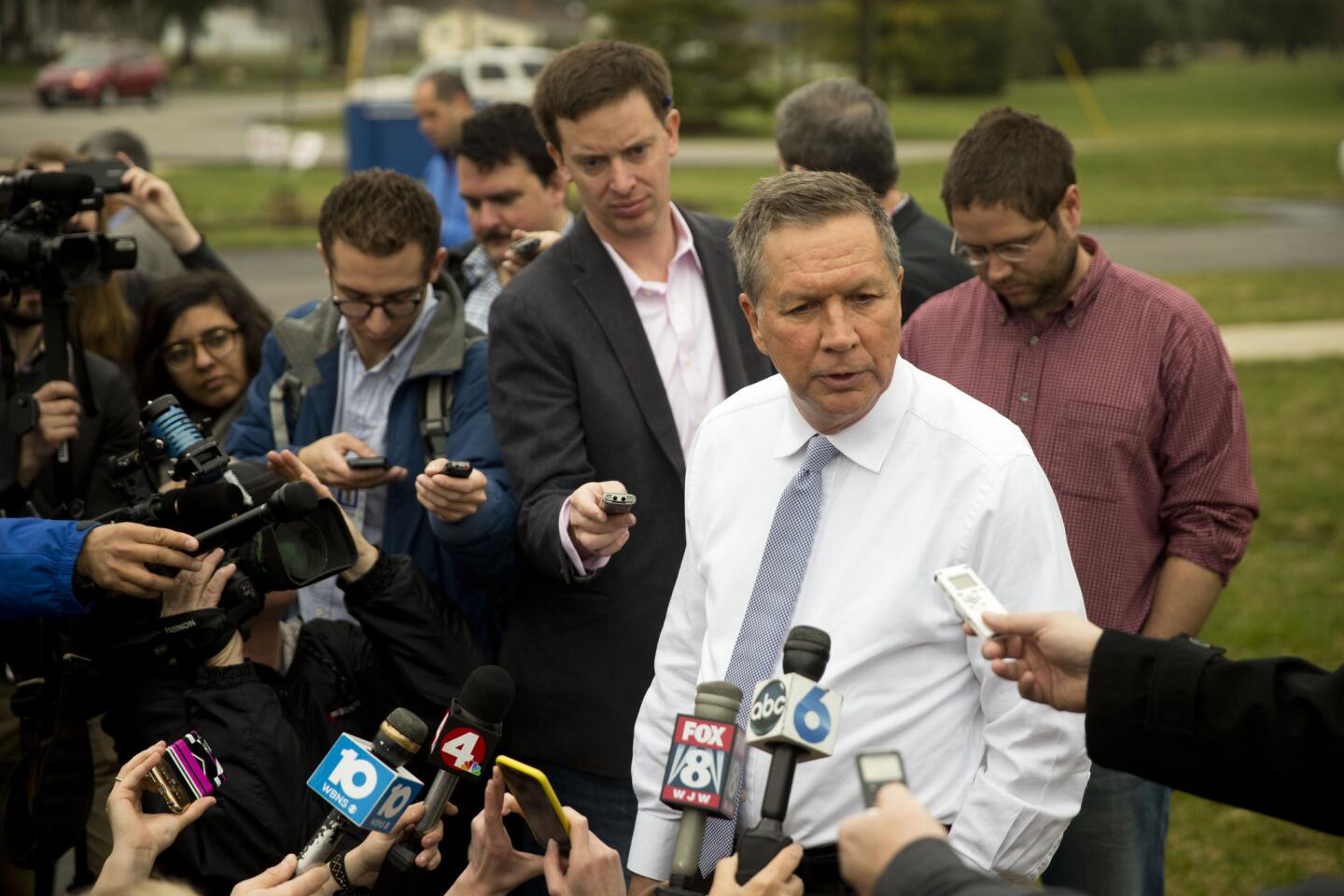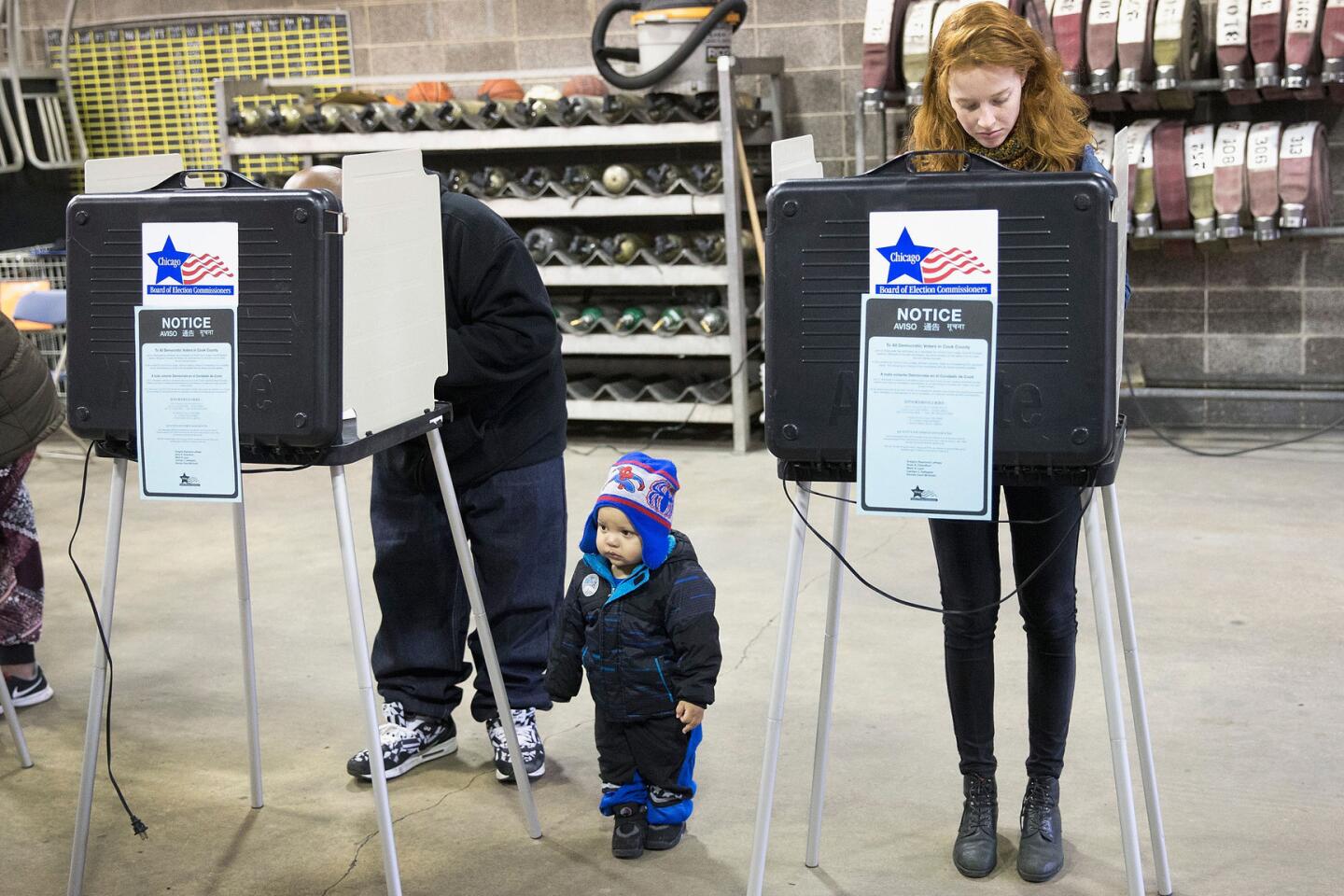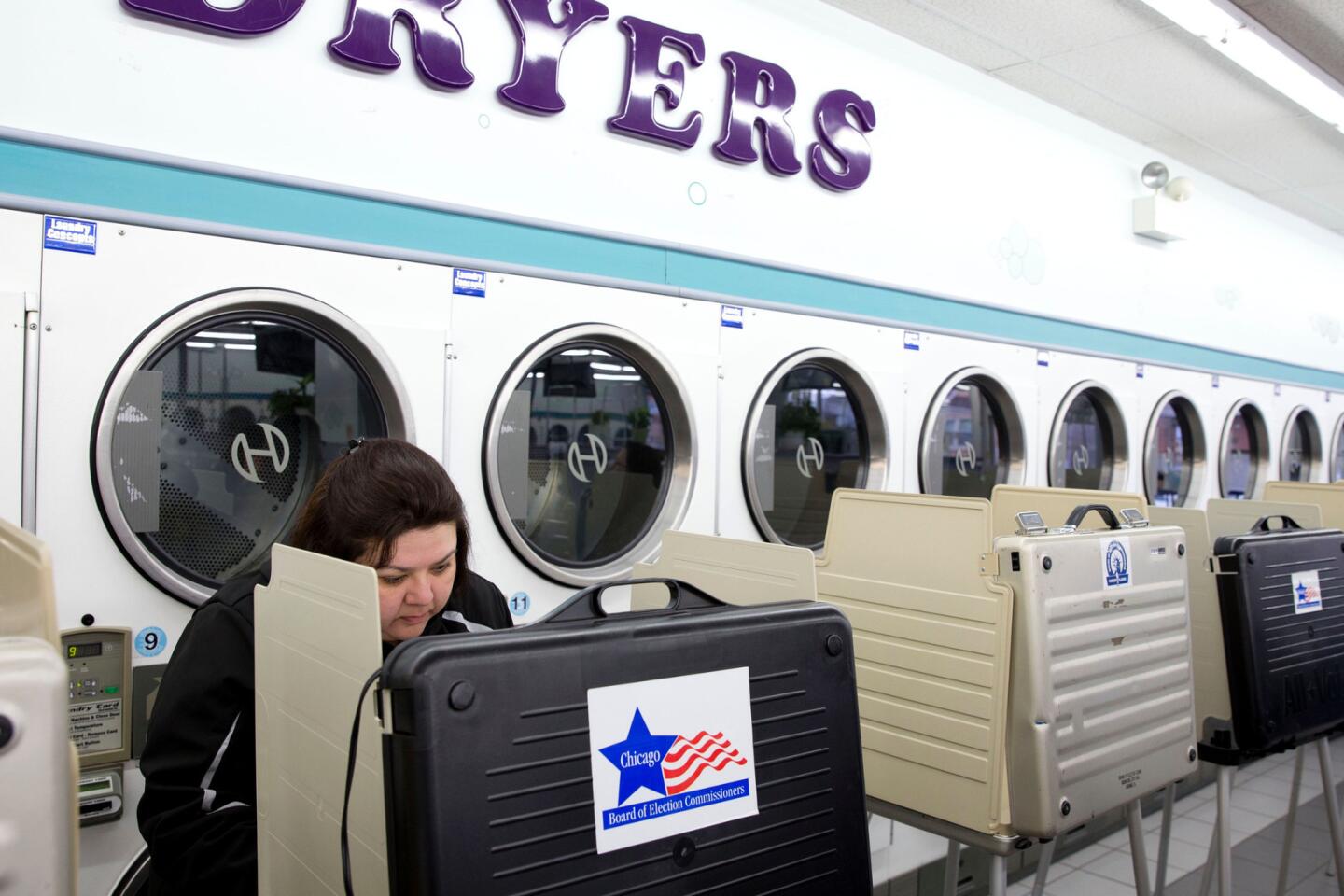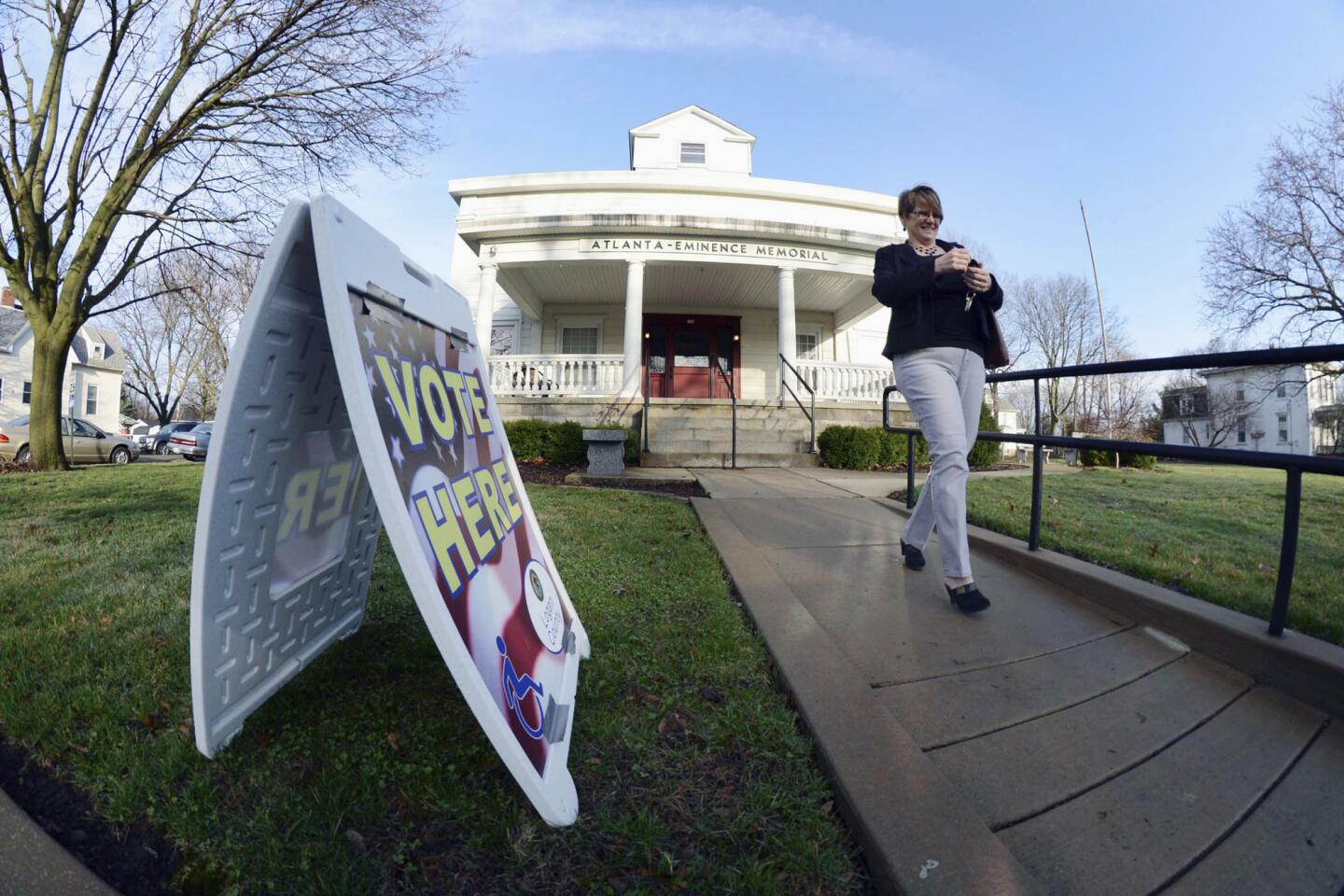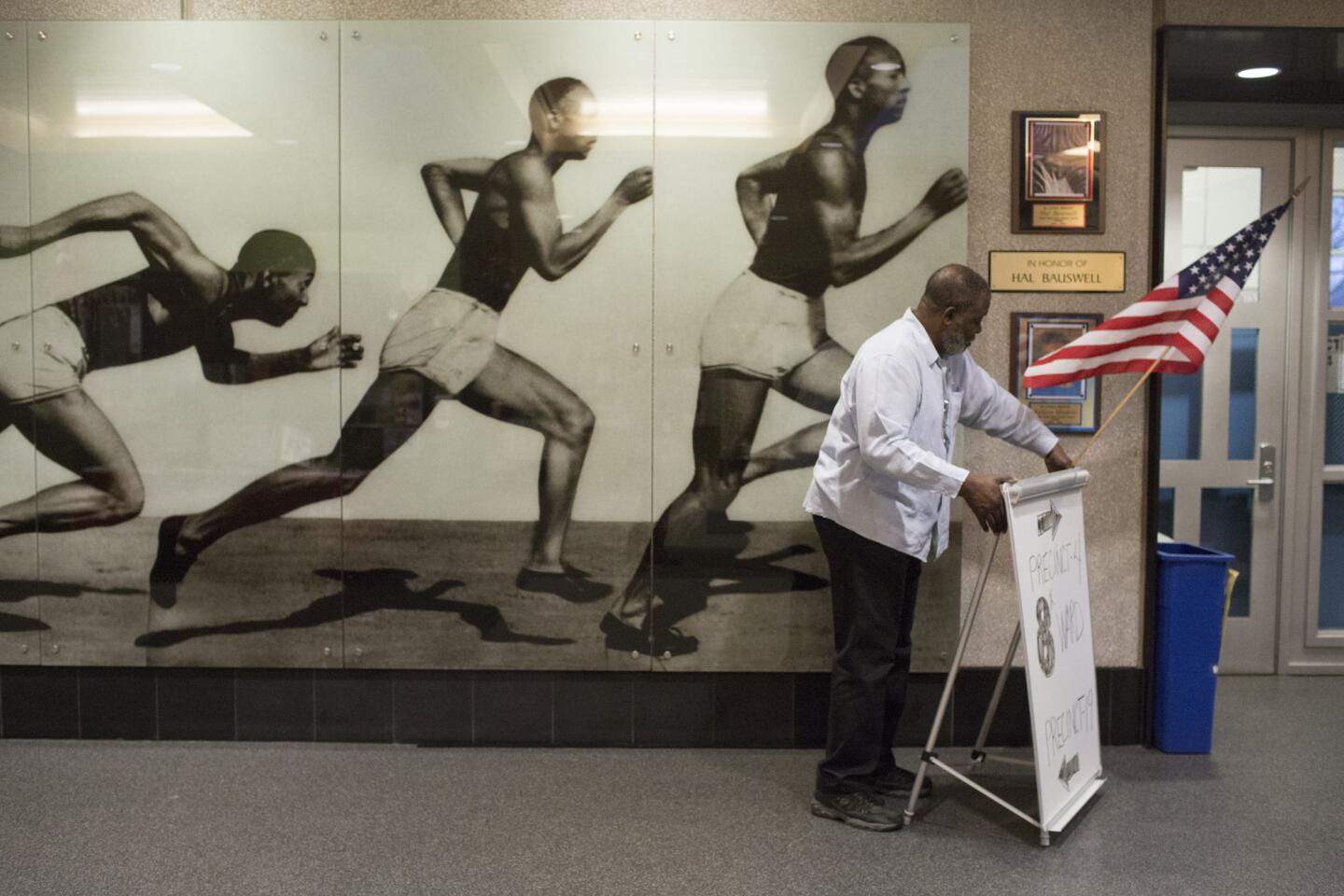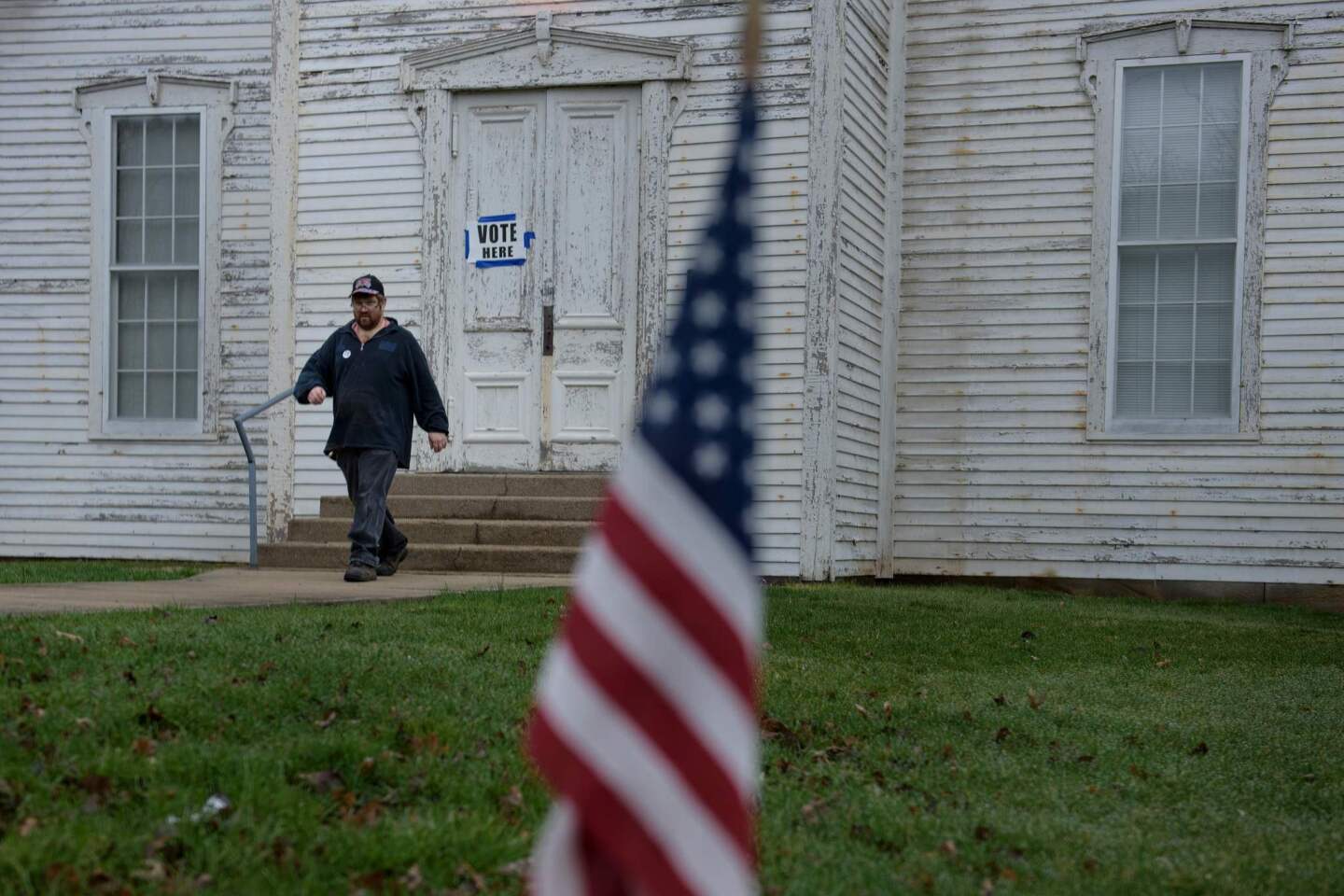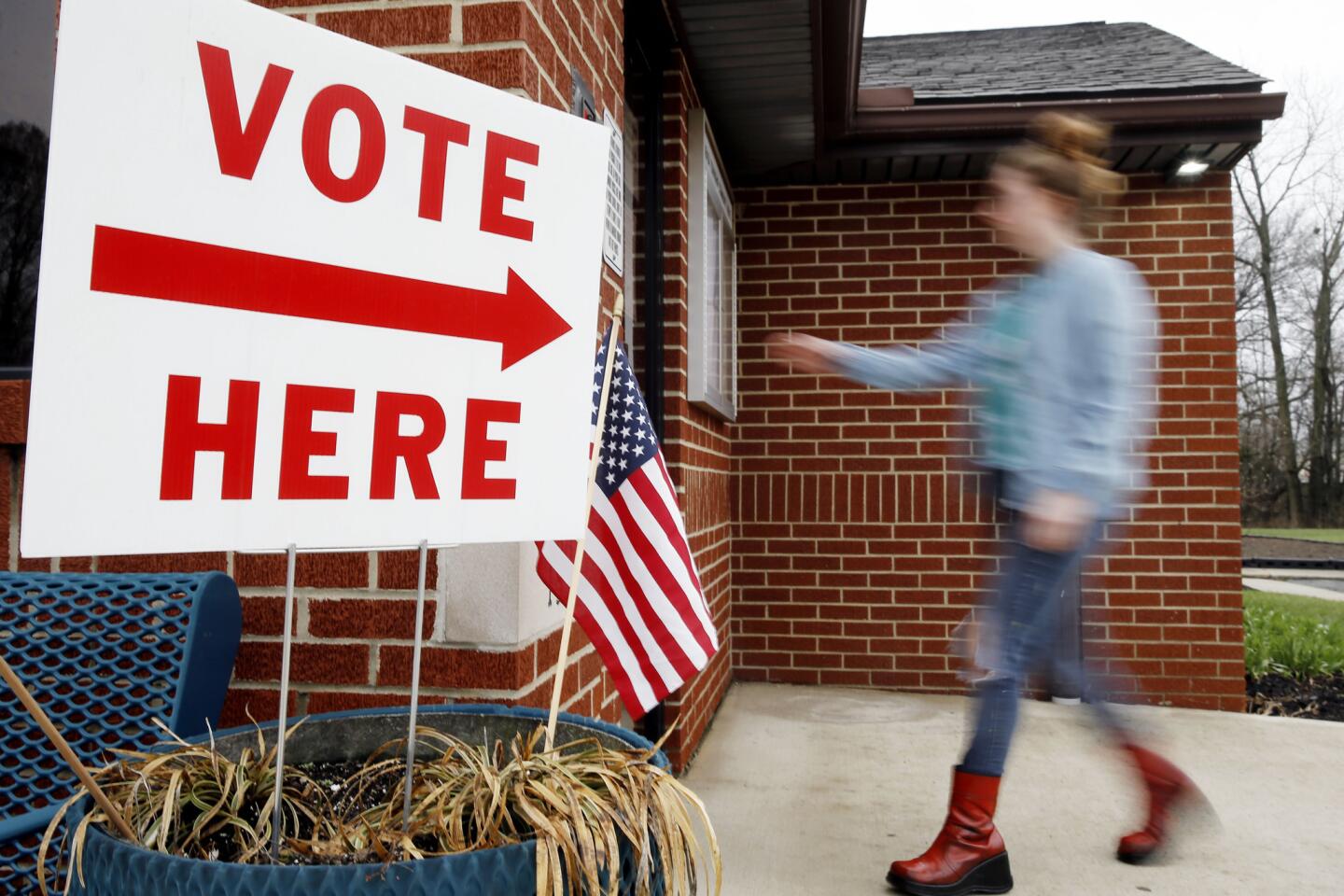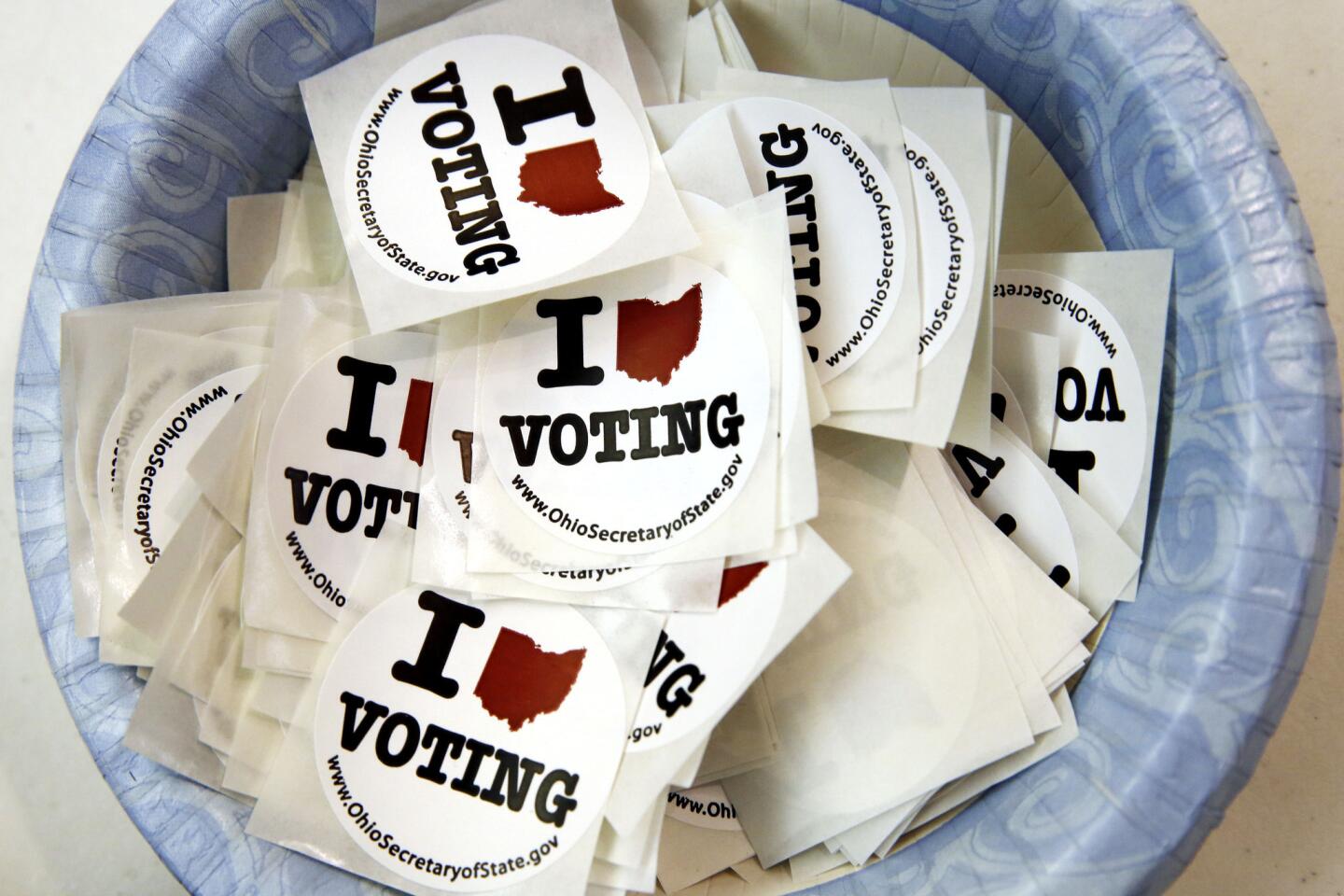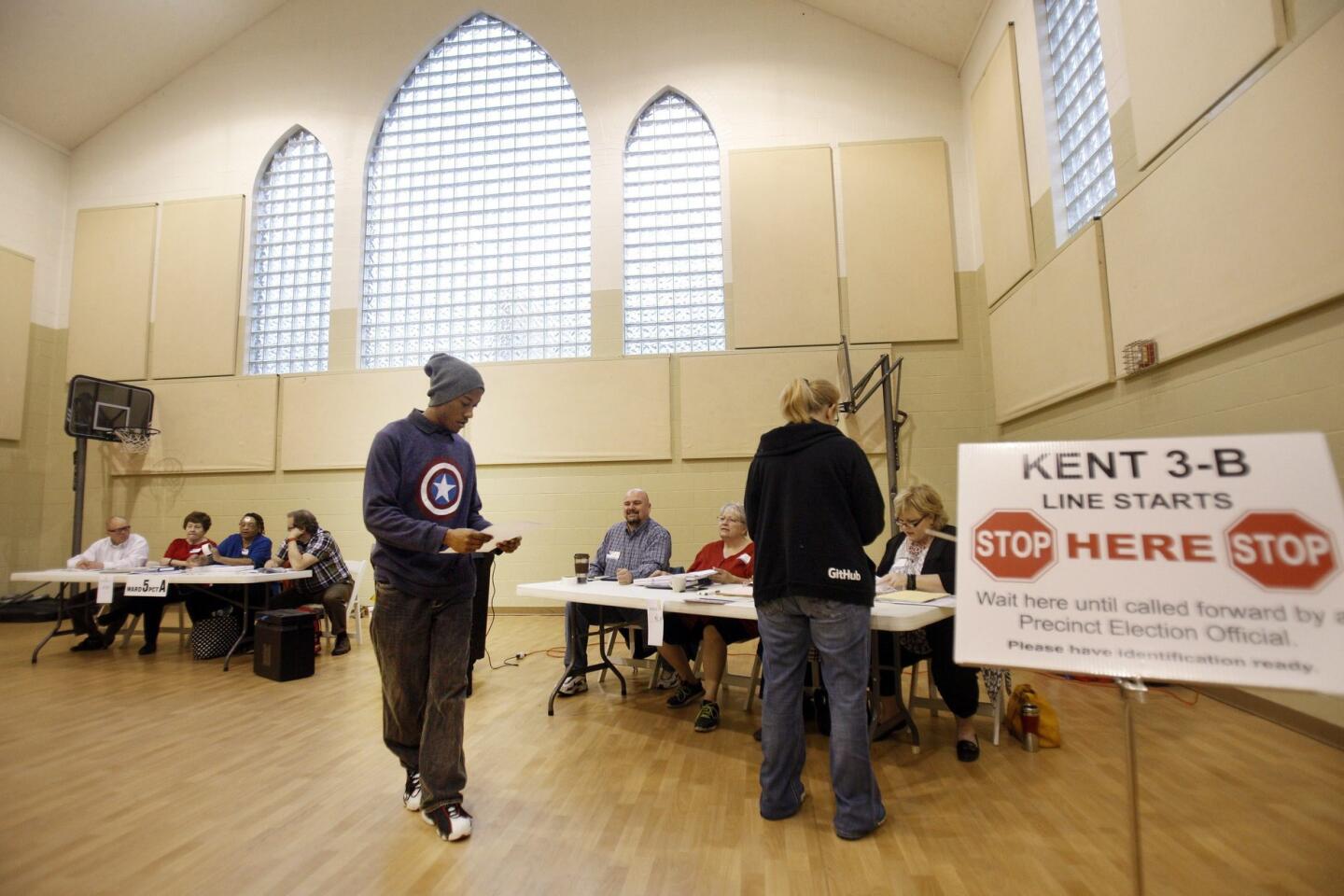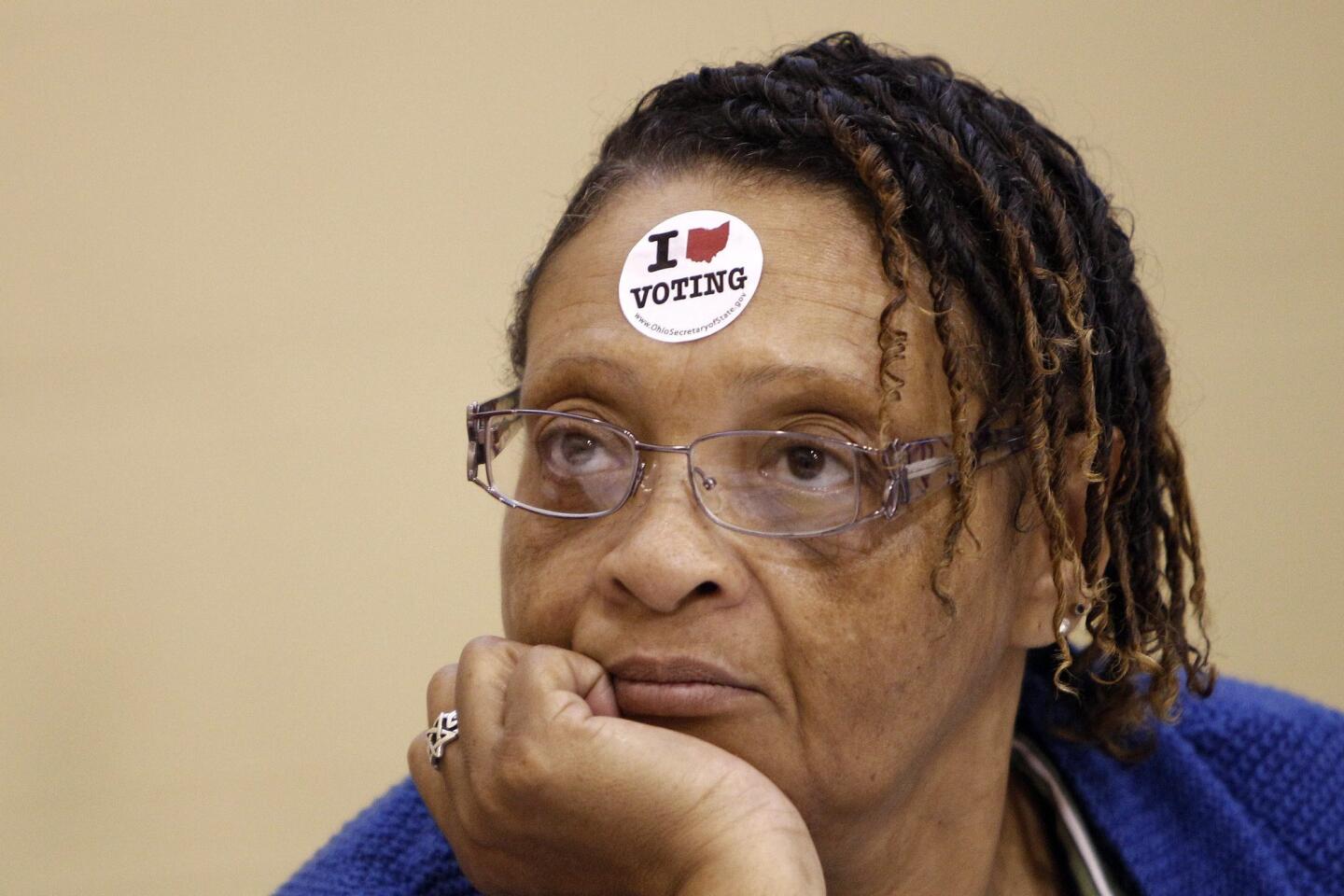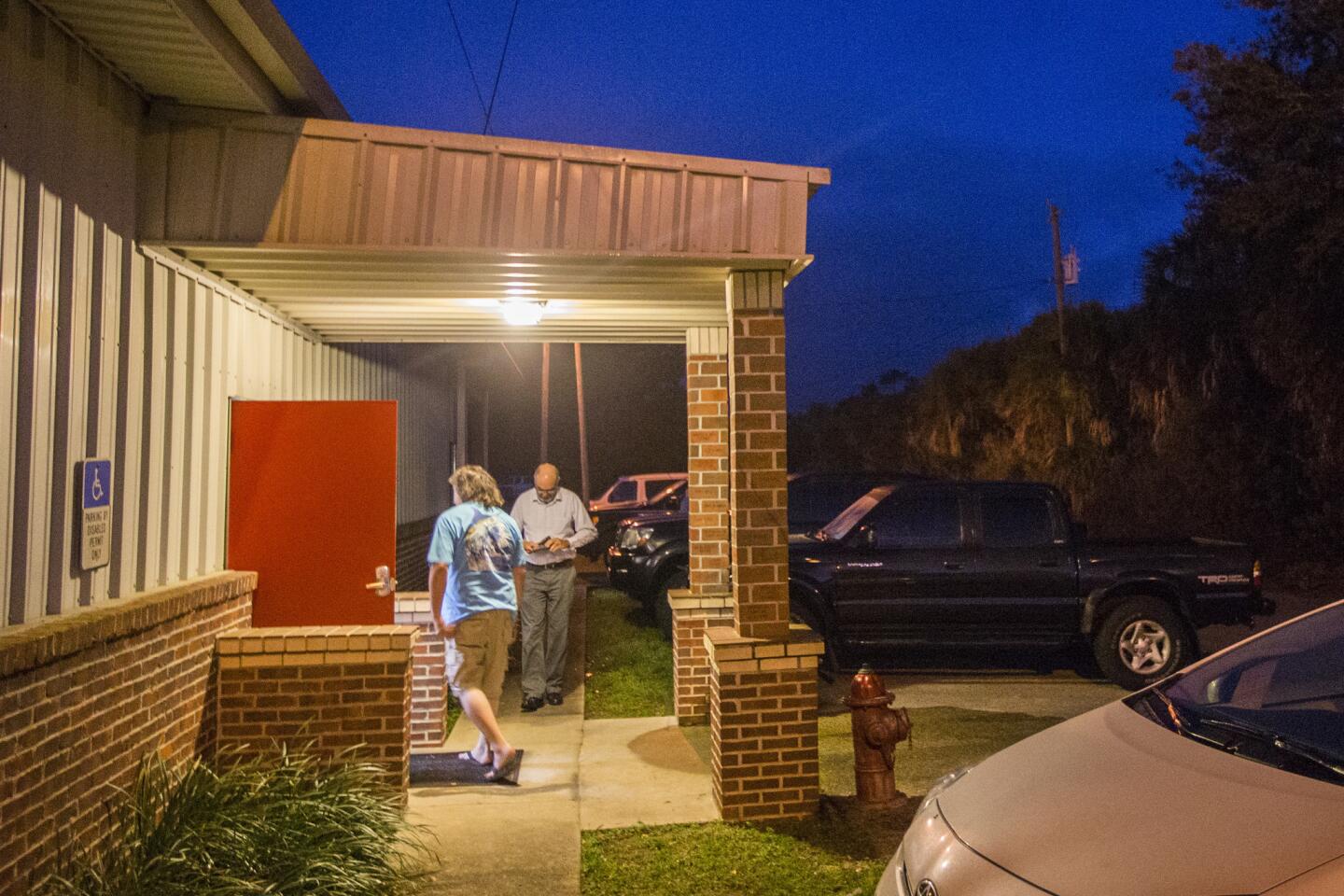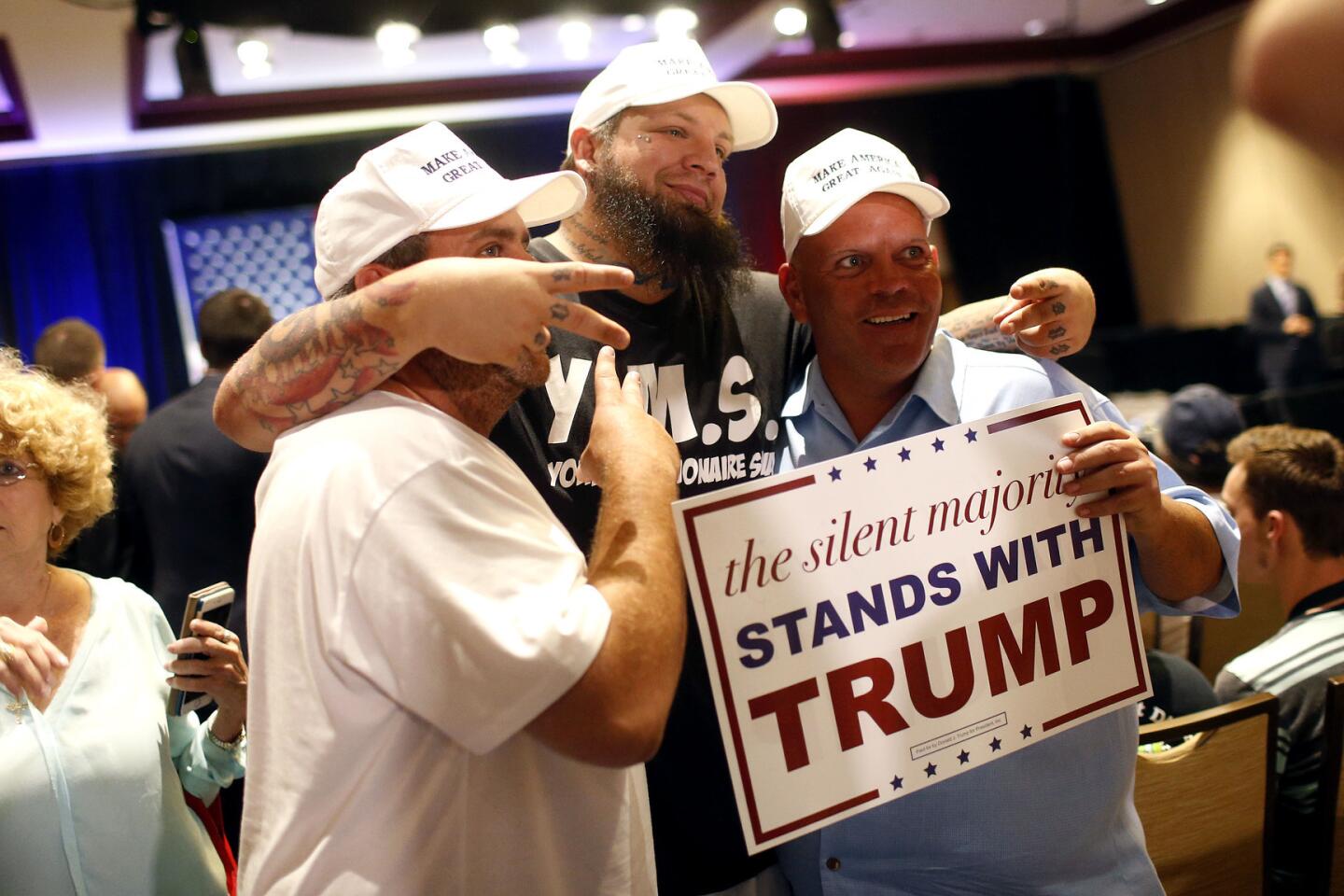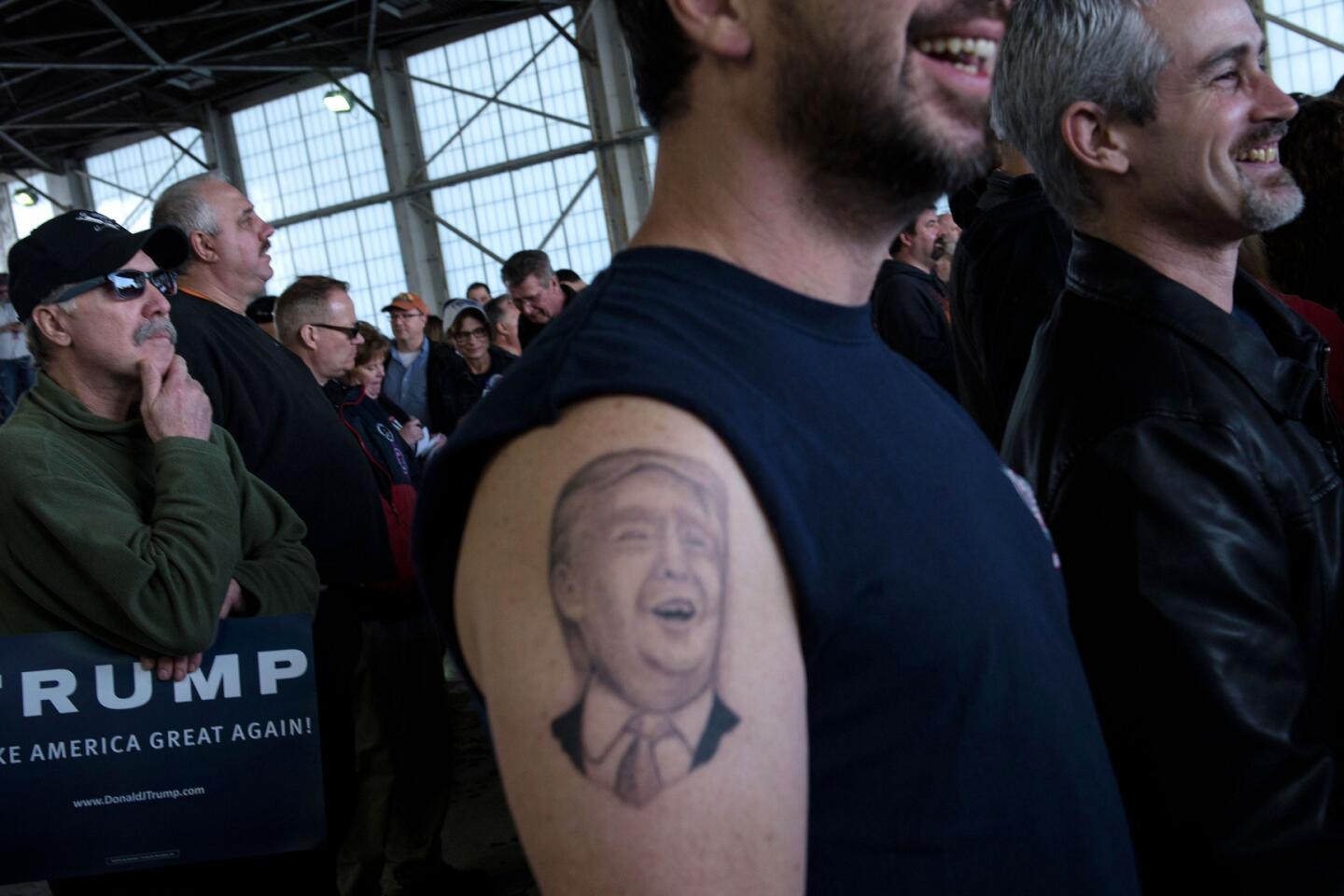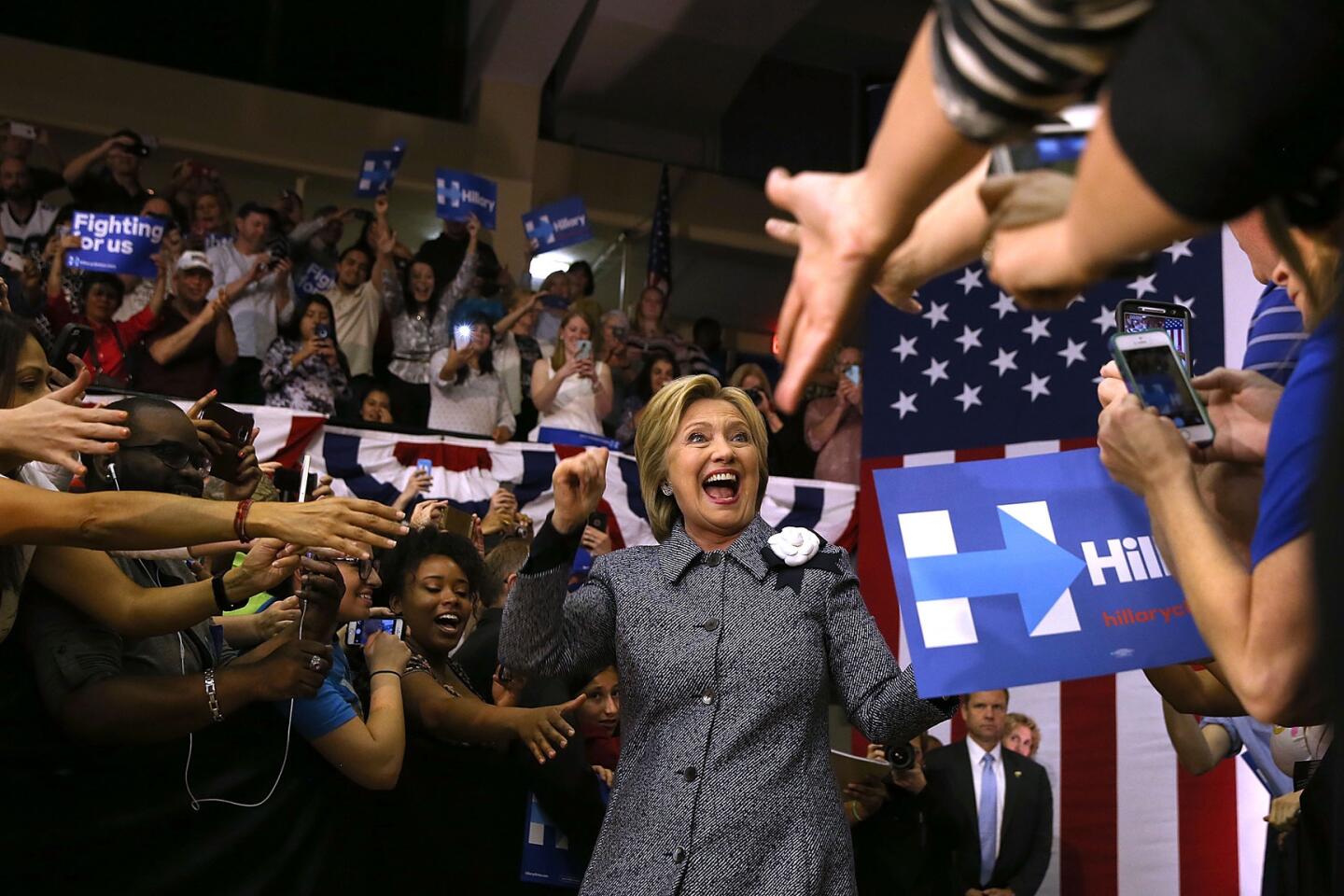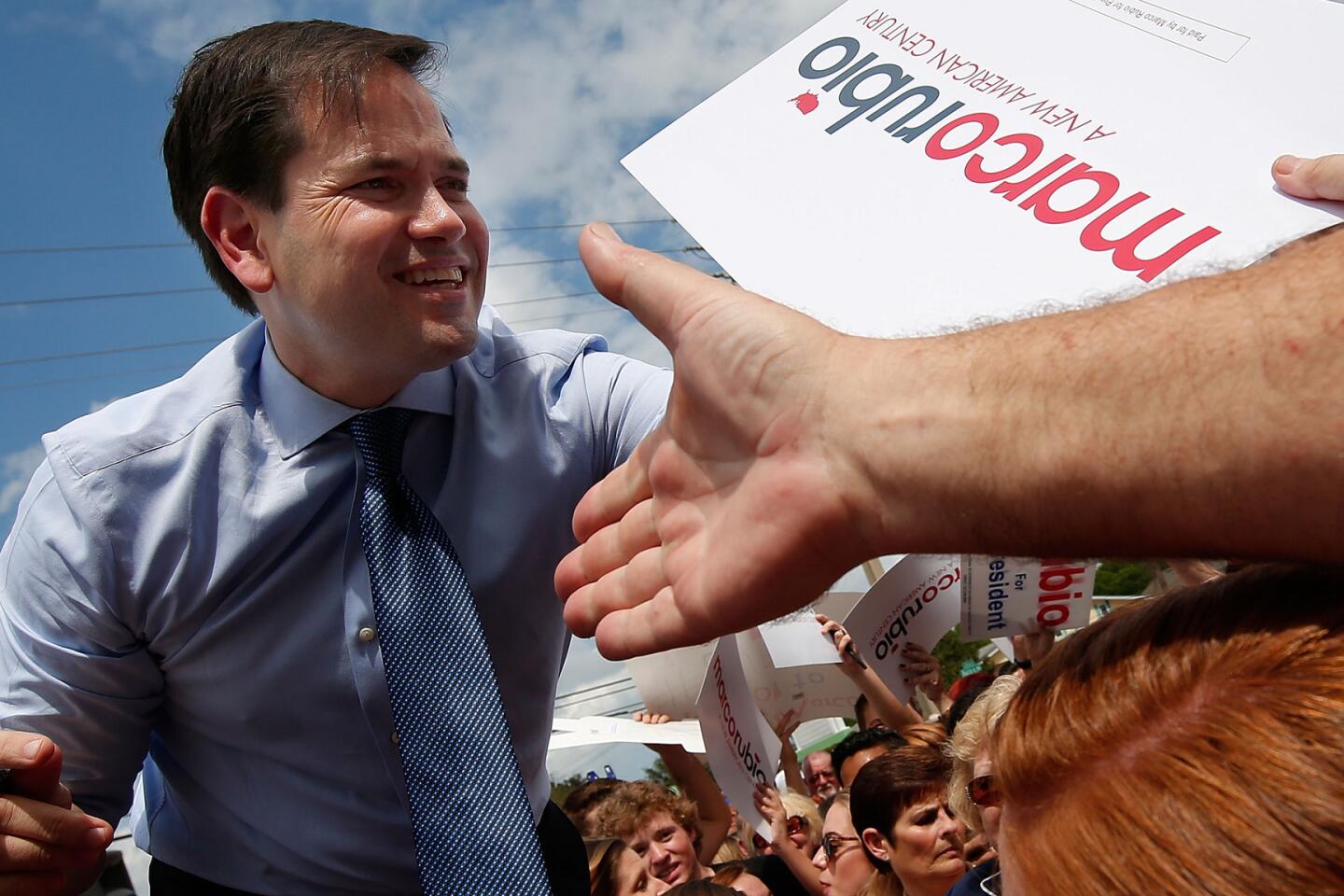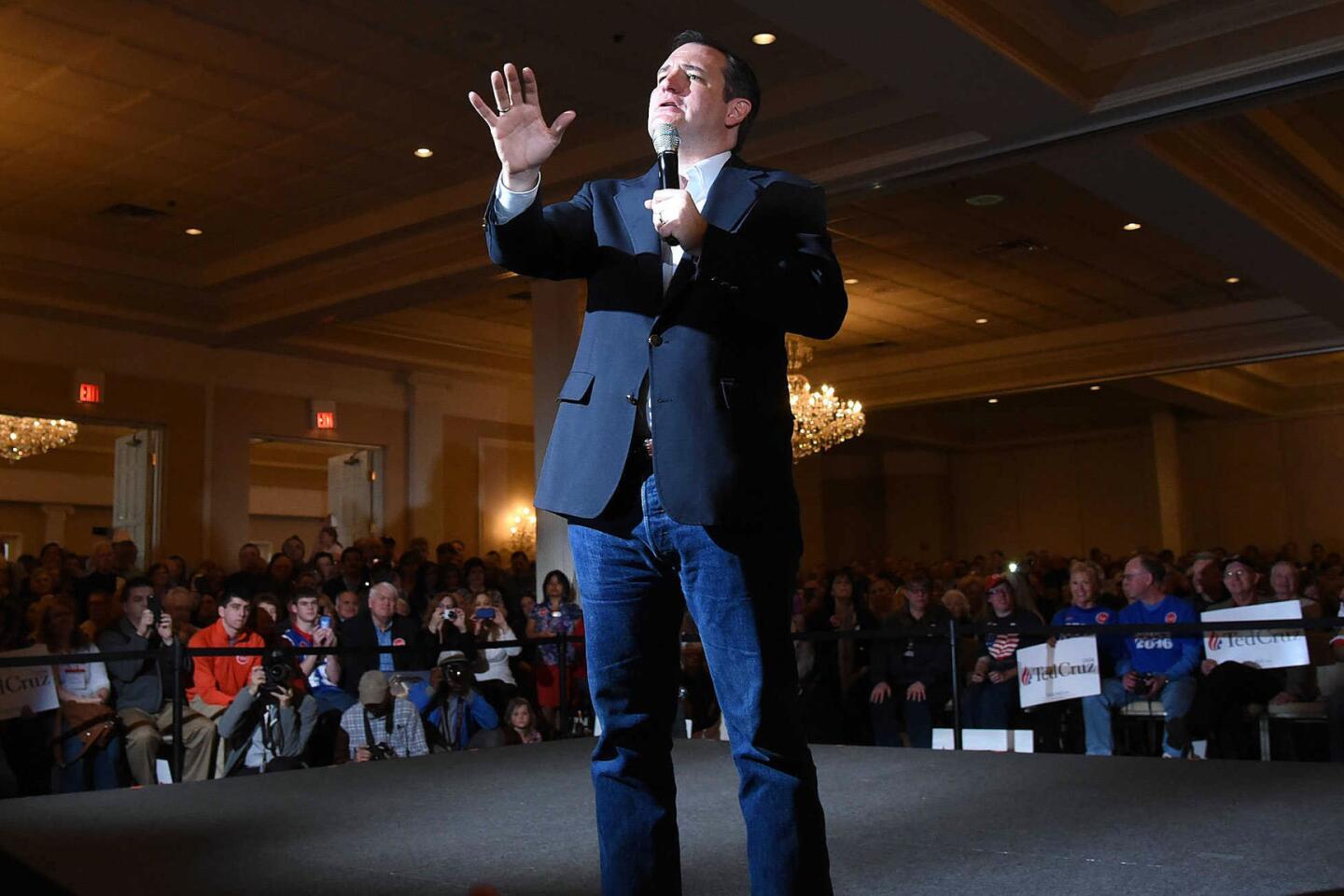Fight for blue-collar Ohio shows how Trump and Sanders are alike and different
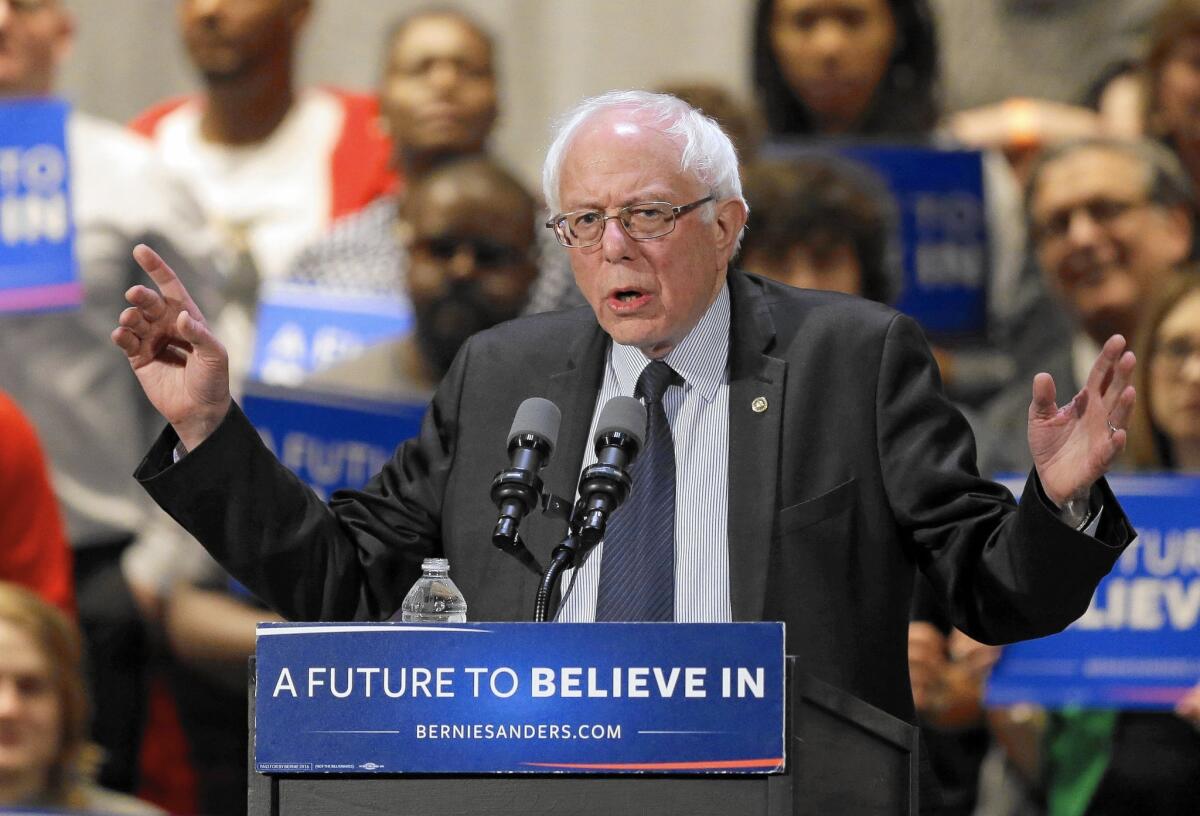
Democratic presidential hopeful Bernie Sanders speaks at a rally in Akron, Ohio, on March 15. Sanders and Republican rival Donald Trump connect with blue-collar voters but from opposite ends of the spectrum.
- Share via
reporting from YOUNGSTOWN, Ohio — Job losses have carved a grievous wound into the eastern flank of Ohio, and particularly into this iconic city halfway between Cleveland and Pittsburgh in what used to be America’s Steel Belt, now rusted through.
So it was perhaps not surprising to find a New York billionaire and a Vermont socialist here, where their ideologically incompatible campaigns for president meet, in their need for votes from those battered by the economy.
Election 2016 | Live coverage on Trail Guide | March 8 election results | Track the delegate race | Sign up for the newsletter
Bernie Sanders, the liberal Democrat, and Donald Trump, the iconoclastic Republican, made those stops on Monday, the day before this state’s primary, each seeing an advantage in an area where losing a job, or losing income, remains an experience felt in the bones of many, the residue of 40 years of bad times. Their visits were an illustration that the arc of politics can bend in strange ways, particularly this year.
Each would bridle at the assertion, but Trump and Sanders have some things in common. Both are seizing on fallout of an uneven recovery that has left many workers feeling abandoned, particularly those in the manufacturing jobs that used to dominate here. Both are waging a fight against their party’s establishment that has grown more caustic as the campaign has worn on — though Trump, certainly, has been more explosive.
Both Trump and Sanders are grievance candidates — but that is where the similarity ends. Sanders inveighs against the billionaires who finance campaigns, a description that fit Trump nicely until this year, when he began campaigning in the same vein. And Sanders champions not only workers but also minorities and women and gay Americans, the rising edge of a country redefining itself.
Trump stands as a champion of the past — of the white, blue-collar workers who used to dominate places such as Youngstown and who today attend his events by the thousands. He is pushing back, overtly and subtly, against inexorable cultural change, though he offers few specifics about how he would reverse it.
Their crowds too are different. The Trump crowd chants, “Build the wall,” when he raises the subject of illegal immigration. The Sanders crowd chants, “Enough is enough,” when he raises the subject of corporate America’s ills.
They are the two candidates who have aroused passion in this unpredictable campaign year.
Hillary Clinton might end up defeating Sanders in Ohio, on the strength of ties built over the years, particularly during her 2008 Ohio primary victory. If she does, it will not be with the sort of full-throated adulation that has greeted Sanders and Trump here, as in every other state.
On Monday morning at the Covelli Centre, an events space built on the site of one of the long-dead mills, Sanders arrived to an astonishing roar. Like all candidates, he says much the same thing much of the time, but his audiences are enraptured in a way that’s startling given that he’s a 74-year-old who looks like a vaguely distracted college professor and sounds as if he never left Brooklyn.
The feel is more rock concert than political event; the decibel levels soar even at the most basic Sanders statement. Cheers even follow his remark that he’s been a member of the Senate environmental committee.
On Sunday night, a Sanders rally at Ohio State drew more than 7,000 students who stood in the rain for hours before they cleared security and then came inside an arena, dripping wet, to whoop for him.
Here in Youngstown, on a Monday morning, there were far fewer, a mix of students and older fans. The size of the crowd prompted an apology by a Sanders organizer who came to the lectern with a tambourine meant to lend some emphasis to her remarks.
Dave Williams, a 52-year-old cement finisher, was attending his first political event, and on Tuesday, he said with some vehemence, he will cast his ballot for Sanders.
“He’s talking about things that need to be talked about,” he said. “The middle class.”
As for Clinton, last seen in Youngstown on Saturday night, talking to entrepreneurs, then quaffing a beer during a local bar’s early St. Patrick’s Day event?
“Been down that road,” Williams replied. She is experienced, yes, but “her experience has gotten the country to where it’s gone.”
Sanders wound into a speech filled with his standards: denouncing Clinton’s reliance on super PACS, her behind-closed-door speeches to Wall Street insiders, her vote for the Iraq war, her support for trade deals that many here blame for job losses even though those started well before the Clinton administration.
“What this campaign is about is doing something really radical: It’s telling the American people the truth,” he said.
“It’s not about me.... It is about the people of this country saying, ‘Enough is enough.’ Our government belongs to all of us, not just a handful of wealthy campaign contributors.”
Yet there is a certain emotional distance to Sanders. In the end, the woman with the tambourine cut to the emotional heart of things better than the candidate as she begged the audience to vote.
“The older generation — we learned from you,” she said. “We have seen you struggle growing up in this area. It is very sad. It’s been very hard to grow up and watch our elders struggle and lose their jobs.”
Job loss was also on the mind of Sue Sescourka, 50, who spoke while waiting for Trump to arrive for his rally Monday evening at Youngstown’s airport.
Sescourka worked in the silvering department at a local GE lightbulb plant until she was injured in an accident a few years ago. Soon there was no job to go back to; the plant that had employed her, and her mother since 1959, closed. Three weeks ago, she started volunteering for Trump.
“We are in a desperate need for change, and a lot of people are afraid of it,” she said. “He’s not afraid to make that change.”
“I think he has the intelligence to do it, the heart to do it, the patriotism to do it.”
Clinton easily defeated Barack Obama here in Mahoning County in the 2008 primary; Obama won the county in both of his general elections. But if there is a definite advantage here for Democratic candidates, there is anecdotal evidence of Democrats requesting Republican ballots for early voting, presumably for Trump.
There’s affinity here for politicians who defy convention. The area was represented in Congress for 17 years by James Traficant, a flamboyant Democrat with a memorable toupee who would end his congressional speeches with a plea to “Beam me up!”
“Donald Trump is Jim Traficant with a billion dollars and a better suit,” said David Betras, chairman of the Mahoning County Democratic Party. Traficant won 15% of the vote in his last try for Congress, a campaign he conducted from a penitentiary cell after his 2002 conviction on bribery and other charges.
The man with the billion dollars and a better suit made it to Youngstown more than an hour late Monday night, accompanied by his former competitor, New Jersey Gov. Chris Christie. The crowd had waited for him. Trump vowed, as he always does, to be an activist president who would threaten to apply tariffs to companies that close their doors to move overseas.

How does the delegate process work, and why do we hear so much about them during the election? We broke down the process for you using Peeps. Track the delegate race and see also: The Iowa caucus explained using gummy bears For more, go to latimes.
He specifically cited the case of Carrier, the air conditioning firm that has announced plans to move 2,100 jobs from two Indiana plants to Mexico in 2017.
“I’m not supposed to be calling up air conditioning companies, but I’m going to do it,” he said, pledging a 35% tariff would be levied on each unit.
“I’m going to bring your industry back,” he said.
He finished his speech and got back on his plane. The campaign for Youngstown was over, the choice left to its people.
Twitter: @cathleendecker
ALSO
Delegate tracker: Who’s winning the race to the nomination?
Can Trump be stopped? 5 things to watch for in the big primaries Tuesday
Now it’s John Kasich’s turn -- Baby! Loser! -- for the Donald Trump treatment
More to Read
Get the L.A. Times Politics newsletter
Deeply reported insights into legislation, politics and policy from Sacramento, Washington and beyond. In your inbox twice per week.
You may occasionally receive promotional content from the Los Angeles Times.
